

How to Research a Company: The Ultimate Guide

Good company research can take many forms. Depending on your research goals, you might want to look at the strengths, weaknesses, opportunities, and threats of a market, or drill down into key industry leaders and emerging players to unpack their successes.
If you want to beat the competition, you need to know their business as well (if not better) than your own. The more intel you have, the quicker you’ll be able to spot and leverage opportunities, respond to market changes, and grow.
Read on to discover how to research a company online, tear down its strategies, and take over its market share.
What is company research?
Company research gathers and analyzes information about a business and its customers. This means understanding its performance data and target audience so you can optimize your own strategy.

In today’s fiercely competitive markets, doing good company research is a game-changer. In fact, a 2022 report on competitive intelligence found that 98% of businesses believe researching their competitors is vital for success.
If you have the right tools to collect accurate competitive intelligence , you’ll be able to anticipate your competitors’ moves and emerging threats to stay ahead and succeed.
How to do company research in 8 steps
Researching a company is a bit like doing detective work. The deeper you go, the more questions you ask, and the more curious you are, the better the outcome will be.
Here are eight steps to steer you through the process of doing company research.
1. Track top competitors
You want to know exactly what your rivals are doing, where they’re going, and how the competitive landscape is changing. With this data, you can carefully plan your next move and take action when and where it’s needed most. Competitive tracking tools like Similarweb give you the ability to track what your rivals are up to. You can measure each competitor’s digital footprint, and identify any changes or growth over time.
Did someone experience a sudden uptick in website visits? Would you like to know why and how? Perhaps they launched a new feature or ad campaign, or maybe its social channel is driving growth.
With Similarweb Digital Research Intelligence, you get alerts about changes so you can be sure you’ll never miss a beat.

Analyzing the top performers in your industry will give you new ideas and provide targets for what is achievable for you.
Similarweb’s Analyze Industry Leaders tool will tell you who is winning in your industry based on their website performance. A Market Quadrant Analysis graph, or competitive matrix , provides a visual snapshot of the websites in your industry and how they compare based on different metrics. The industry leaders may inspire you to try new things, while the weaker competitors in your industry can provide you with swift opportunities to chip into their market share.

Pro tip: Similarweb’s Similar Sites tool helps you uncover up to 40 domains that are similar to yours. Finding these domains can be infinitely useful when conducting a competitive content analysis . You can audit these domains to learn more about their content strategy and upgrade your own.

2. Benchmark
Now that you have a good view of the market, you need to drill down into your competitors’ performance. You want to understand their metrics and KPIs so you can benchmark them against your own.
A company research and analysis tool can help you understand your competitors’ digital reach and performance. You can look at multiple websites or domains owned by a single company to analyze their aggregated data or look at a specific market. This will give you a good idea of the business’ size and market share .
You’ll also want to look at their engagement metrics and any changes over time. If you see their metrics improving, they are probably investing in a digital strategy . You should look into this to see what has been working for them. We’ll show you how in the next section.

Pro Tip: Don’t forget to look at mobile app intelligence too. There are five key metrics you’ll want to track when benchmarking an app:
- Demographics
3. Compare traffic and engagement
These days, it’s no longer enough to consider website traffic and engagement metrics on their own. The complete digital perspective of any company includes mobile app intelligence, alongside traditional desktop and mobile web metrics. You need to see the full picture before you make any judgments or decisions.
Using Similarweb digital intelligence, I wanted to view the key players in the travel industry –specifically travel booking sites, like booking.com, Expedia, and Airbnb. First, I want my company research to focus on mobile web and desktop traffic alone.

Using Similarweb Digital Research Intelligence , I can see the overall benchmarks for traffic and engagement. This shows metrics like monthly visits, unique visitors, pages per visit, bounce rate, and visit duration.
The top websites include booking.com , Airbnb , Expedia , Agoda , and Hotels.com . So, in essence, these are my industry leaders .
However, knowing how important apps are these days to consumers, I want to consider app intelligence in my company research too. When I add this data into the mix, things look a little different.
On both Android and iOS: Expedia, Airbnb, VRBO, booking.com, and Hopper are my top five.
Now, my view of industry leaders has changed . We’ve got three key players who are leading desktop, mobile web, and app platforms; and four others, who respectively dominate different channels.

Here, you can see a range of engagement metrics that apply to mobile apps on Android. Including active users, number of sessions, and session times; which shows engagement, upturns, downturns, and opportunities at a glance.
So, when you view traffic and engagement metrics, make sure you explore desktop, mobile web, and app intelligence to get an accurate picture of what’s really going on.
4. View audience interests
Understanding cross-browsing behavior tells you what other sites your users are interested in. Maybe they are looking at other products and solutions like yours!
This audience interests tool allows you to evaluate the browsing behavior of your target audience, helping you understand user intent and their purchasing process. You might even discover new markets or a specific niche audience , and come up with new audience acquisition strategies.

5. Pinpoint audience overlap
Who else holds your potential customer’s attention? With Similarweb’s Audience Overlap feature, you can analyze metrics and insights on the overlap of visitors across up to five websites for a selected time period and geographical region. You’ll be able to determine the size of your total addressable audience , evaluate what part of the audience is shared, and pinpoint your unreached audience potential.
This is also a good way to gauge audience loyalty . You’ll see the proportion of monthly active users who look at multiple sites in the same category or just one site.

6. Analyze specific pages
While a company may be your competitor, you may not be competing on every front. You might only want to look at a particular segment of a business when doing your company research. This ensures that your insights are specific and useful, and leave out less relevant information.
Similarweb’s Segment Analysis tool lets you slice the URL of a website to analyze just the parts that are relevant to you. You can deconstruct their website to look at a specific category, topic, brand, or whatever else interests you. This can help you benchmark a specific line of business or individual products.
This analysis is extremely powerful for marketing and sales managers, data analysts, and BI specialists who want to optimize their strategies for specific business segments. For example, if you are a clothing retailer looking to launch a line of kids’ clothes, you can use this tool to analyze your competitors’ kids’ clothing lines.

7. Reveal successful conversion strategies
What makes customers convert? The only way to know for sure is to analyze conversion data across your industry. You need to understand the conversion funnel , which keywords and marketing channels drive traffic, and which trends your potential customers are interested in.
You can get a unique view of your industry’s conversion data with Similarweb’s Conversion Analysis tool. Check out each company’s conversion efficiency and how they scale over time. You can identify efficient marketing channels , go-to-market strategies, and their ROI for marketing spending. You can also benchmark your metrics across the industry average.
Understanding conversion strategies also reveals opportunities for your own growth. You can examine category performance at top retailers such as Amazon, Walmart, and Target, and identify what consumers are searching for at the different retailers and what converts. When you understand the customer journey, you can better position yourself to guide them toward purchasing from you.

8. Research mobile app performance
When you research a business, you need to look at all customer touchpoints. Today, that means analyzing apps alongside web and mobile web traffic. You want to know how well your competitors’ apps rank so you can focus on your own app strategy. With rapid consumer adoption of mobile-first spending ( 46% of people now complete a full purchase via mobile ), app intelligence is a key consideration for any type of company research. In almost every industry, the digital landscape changes when you add app intelligence metrics.
If you’re looking at apps competitively, you want to consider:
- Monthly/Daily Active Users
- No. of sessions/session time
- Sessions per user
- Overall rank
- Category rank
- User retention
- App demographics
Similarweb App Intelligence Premium now provides a few ways to help you view rankings, downloads, engagement, and usage metrics across both Android and iOS. From benchmarking an app to unpacking the successes of those with apps in your market; good company research should include app analysis. By unifying digital insights, you see a truer picture of a company’s successes online.
How to research a company like an expert
Follow these eight steps and you’ll quickly be able to research any company in any niche like a pro. Uncover key insights that tell you more about a market, target audience, or competitors to shape your own strategy for success.
Ready to get growing? Grab a free trial of Similarweb today.
See Similarweb In Action
Don't miss out! Have the latest data at your fingertips.
Why do company research?
Your business doesn’t exist in a vacuum. You’re competing with other companies and operating in an industry that has its own norms and expectations. If you want to succeed, you need to research other companies in your industry to ensure your strategy is aligned, but also positioned to give you a competitive advantage . You won’t be able to do this without researching other companies.
What to look for when researching a company?
You want to review all their company metrics, including traffic and engagement metrics, and look at their strategy, focus, processes, and content. You should search for any interesting ideas and identify where the company excels. All the data you collect will be valuable for you to compete.
What can company research tell you?
Good company research shows you how a market, company, and its target audience’s interests change over time. It can help you develop your own strategy for growth, and shows trends and emerging threats to watch out for.
Related Posts

How to Conduct a Social Media Competitor Analysis: 5 Quick Steps

Most Popular Messaging Apps Worldwide 2023

Market Sizing: Measuring Your TAM, SAM, and SOM
Wondering what similarweb can do for you.
Here are two ways you can get started with Similarweb today!

An official website of the United States government
Here’s how you know
Official websites use .gov A .gov website belongs to an official government organization in the United States.
Secure .gov websites use HTTPS A lock ( Lock A locked padlock ) or https:// means you’ve safely connected to the .gov website. Share sensitive information only on official, secure websites.
- Library Search
- Commerce Research Library
Company & Industry Research
- Company Research
- Industry Research
- Market Research
Research Tips
Company research can include a lot of different types of Information. This guide focuses on the best databases the Commerce Research Library has to offer for corporate profiles and corporate family research.
If you're looking for where a company or subsidiary is officially registered check their location in one of the database below and then check the official government website for the relevant state to find official documentation. Here is an example of the Delaware website , a popular state where many companies register.
Databases can provide incomplete and conflicting information. Use clues like shared company names, shared executives, and shared websites to determine if two entities are connected even if they do not appear to have a parent/subsidiary relationship.
Best Bets Company Profiles
For access, request an account . Public and private company profiles and research on both domestic and international companies. Users can search by company name, industry (keyword and NAICS or SIC codes), geographical region, employee and revenue size, and corporate family tree.
CourtLink A detailed collection of federal and state court dockets and documents, including relevant briefs, pleadings, and motions.
Nexis Diligence Diligence enables you to conduct thorough due diligence on companies and individuals, going beyond credit scores and watch lists to develop a comprehensive due diligence report utilizing global news sources, sanction lists, company information, legal history, and public records.
Nexis Dossier Take advantage of a broad collection of company financials, industry analysis, hard-to-find contact data and more—from a single interface.
Nexis Gain unique insights from over 40,000 sources, including trusted up-to-date and archived news, company profiles, public records, industry information and social media content – all in one place.
Best Bets for Corporate Family Trees
Other Company Research Resources
As part of the EBSCOhost Business Source Premier database, Company Profiles provide MarketLine/Medtrack Reports, which cover company overview, SWOT analyses, key facts, top competitors, company products and services, subsidiaries, etc.
This directory features listings across the government, corporations, and nonprofit organizations. Find individuals holding high-level positions and their support staff or locate departments, agencies, major offices, and smaller bureaus by subject areas or organization.
ProQuest's ABI/INFORM includes full-text journals and key trade publications, dissertations, market reports, industry reports, business cases, global and trade news, local and regional business information, SSRN working papers, and other industry-focused information, as well as the Wall Street Journal back to 1984.
Training Webinars
Company research: family trees 101.
- Webex Recording
Business News
- << Previous: Vetting
- Next: Industry Research >>
- Last Updated: Mar 8, 2024 2:39 PM
- URL: https://library.doc.gov/company

Contact Info
1401 Constitution Ave, NW Washington, DC 20230
Email: [email protected]
Monday to Friday 8 a.m. to 4:30 p.m.
Closed on Federal Holidays
General Public - by appointment only

library.doc.gov
An official website of the U.S. Department of Commerce
Professional network data
Leverage our top B2B datasets
Job posting data
Get access to hundreds of millions of jobs
Employee review data
Get data for employee sentiment analysis
Enhanced professional network data
Employee data
Get data on global talent at scale
Funding data
Discover and analyze funding deals
Firmographic data
Unlock a 360° view of millions of companies
Technographic data
Analyze companies’ tech stacks
BY INDUSTRY
MOST POPULAR USE CASES
Company API
Find and get data on specific companies
Historical headcount API
See how company headcounts are changing
Employee API
Access millions of employee profiles
Jobs data API
Find relevant jobs with ease
Largest professional network
Company, employee, and jobs data
Company and jobs data
Company and review data
Company, jobs, review, salary data
Company and employee data
Leveraging web data for informed investing
Building or enhancing data-driven HR tech
Supercharging your lead generation engine
Transforming marketing with web data
Market research
Conducting comprehensive market research
Lead enrichment
Use Coresignal’s data for enrichment
Talent analytics
Analyze talent from multiple perspectives
Talent sourcing
Comprehensive talent data for recruitment
Investment analysis
Source deals, evaluate risk and much more
Target market analysis
Build a complete view of the market
Competitive analysis
Identify and analyze competitors
B2B Intent data
Lesser-known ways to find intent signals
Documentation
Detailed guides, samples, and dictionaries
Learn and get insipired
Find answers to popular questions
Resource center
Data insights, customer stories, expert articles
How to Conduct Company Research for Investment?

March 06, 2023
Is a company worth the investment? To answer this question accessing high-quality, reliable data is not just a preference—it's a necessity. Yet, the path to uncovering actionable insights is often littered with obstacles: outdated financial statements, inconsistent metrics, and biased market analyses can cloud judgment, leading investors astray.
In this article, we will discuss the various types of data critical to comprehensive company research, its sourcing, and evaluating both opportunities and risks within potential investments.
Types of information needed for researching a company
Any investment analysis is built on information. Researching a company for investment involves leveraging various types of data.
- Firstly, there is, of course, firmographic information like the company’s location, industry, revenue, and size. This is where the company research kicks off
- Then another crucial piece is Information about the key employees of the company, and it ranges from contact and professional to leisure and interest data.
- Further on we want to evaluate the growth trends and potential. For example, changes in online job postings or headcount data might indicate the firm’s growth or decline. Meanwhile, technographic data provides insight into how well the company adjusts to the fast-paced technological development.
- Finally, effective company and market research involves news data analysis. This includes company reviews and other direct mentions, as well as market events and industry trends that could affect the firm.

How to conduct effective company research?
Identify the company.
The first step is, of course, identifying the object of our analysis. Thus, researching a company starts with finding out its defining features, for example, whether it is a public or private company. Public companies are easier to investigate as they are traceable by a ticker symbol and are required to disclose financial information. Other key identifiers of the company are its industry, market share, and where it is registered.
Clarify research questions
Research is effective when it has clearly defined goals. Think about what sort of questions need to be answered for you to be able to reach an investment decision about a specific company. Naturally, the main questions will revolve around the company’s products, services, sales, growth trends, management capabilities, and financial health.
Determine which sources are reliable and relevant
You are going to need a lot of data to answer the questions that you have raised. Thus, when choosing data sources, consider what information is relevant to your goals. If you seek to know more about company culture, for example, employer review sites are what you need.
The source should also be reliable. Financial data can come from the company’s annual reports and publicly available governmental sources. Meanwhile, market news should only be retrieved from trusted media outlets. Relevancy and reliability are the most important factors when choosing a third-party data provider.
Utilize data gathering and analysis tools
Finally, you will need to use the right tools to do the company analysis efficiently. While a manual google search or review of the company website might get you started, it won’t take you all the way.
Aggregating business news and analyzing public sentiment will require considerable automation. Below you will find more information on the tools and resources to use when researching companies.

Essential tools and resources for gathering information
Public companies operating in the US are required to file accounting and other reports with the Securities and Exchange Commission (SEC). You can use its Electronic Data Gathering and Retrieval (EDGAR) tool to search SEC filings.
EDGAR allows you to search for keywords in various documents describing everything from the company’s historical performance to current business operations and acquisitions. Thus, when it comes to traditional business data, EDGAR is certainly your friend.
Coresignal’s APIs
When it comes to public web data, Coresignal is the right place to be. Consider trying our APIs which allow searching for multiple data points and retrieve what you need immediately. The APIs will fetch you everything from general firmographics to in-depth information about the company’s employees .
Subscription resources
Library of congress provides multiple subscription-based tools that optimize company research for investment purposes. For example, Mergent Online archives past and present company information that can be searched by financial and textual criteria.
Meanwhile, Factiva holds premium business publications in 26 languages and from 200 countries all over the world. The complete list of subscription tools as well as the complete guide on how to access and use them can be found on the Library’s website .
Linkedin and other social media websites
When considering investing in a business, you want to know what kind of person or persons are running it, what they are interested in, who they network with, and other information found on social media profiles might make you aware of red flags that would otherwise be missed.
Linkedin is the leading social network where prospects on a job search gather information about a potential employer. It might just as well be used to research a company for investment decision-making. In addition to people’s data, social media pages are sources for public company reviews.

How to apply the gathered information to investment decisions?
Using the analysis results for investment decisions is all about putting it in the context of market trends and the competitive landscape faced by the business. Thus, your findings should be leveraged against the knowledge acquired by deeper market research into similar products and services.
First, look at the detailed information about the company’s performance and financial stance. If everything seems to be good there, check for red flags. News about the company and reviews by employees and customers will be the most useful for this purpose. Information from the news and social media websites will also help when considering market trends that will affect the business in question.
The final step of the analysis is scrutinizing every publicly available information about the key decision-makers in the company of interest. Insights from their online presence should supplement data on their department, role in the organization, and expertise.
The importance of company research
Investors need to research a company thoroughly before making their decision. Otherwise, they would have to pay not only the price of a bad investment but also that of a lost opportunity to invest in a better business. Only a deep analysis of the organization, its competitors, and industry conditions will give a good idea of its value.
Additionally, researching a company for its business model and the people that are involved has potential long-term benefits. The knowledge acquired might be used in deciding upon future opportunities when the same people or a similar business is encountered.
Thus, researching businesses is the smart thing to do before arriving at any important investment decision.
Boost your growth
See a variety of datasets that will help your business growth.
Don’t miss a thing
Subscribe to our monthly newsletter to learn how you can grow your business with public web data.
By providing your email address you agree to receive newsletters from Coresignal. For more information about your data processing, please take a look at our Privacy Policy .

Related articles
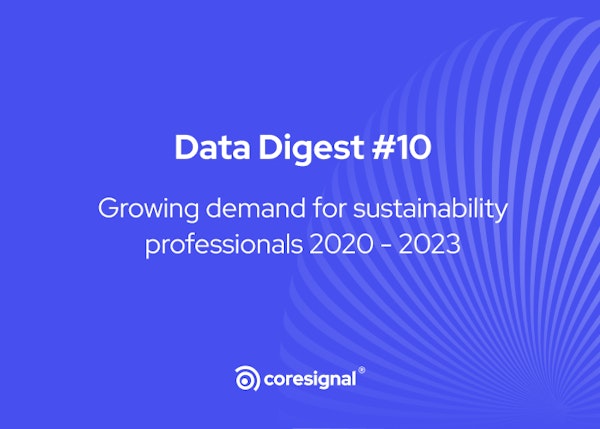
Data Analysis
Growing demand for sustainability professionals 2020 - 2023
Original research about the changes in demand for sustainability specialists throughout 2020-2023....
March 29, 2024
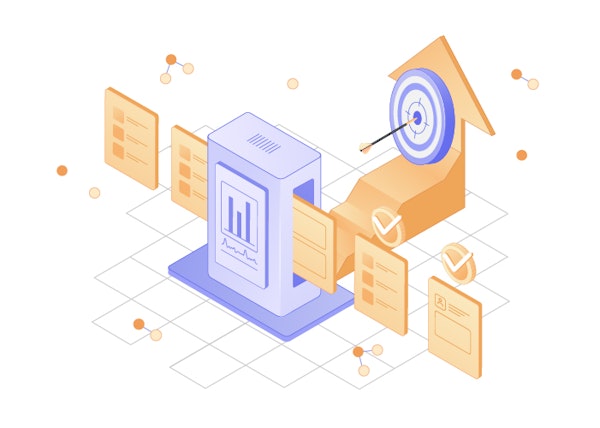
Refined Data as a High-Value, Low-Maintenance Option
Raw data refinement is a vital step before delving into the analysis. But should all companies do this by...
March 28, 2024

HR & Recruitment
Employee Data: Types, Sources, and Use Cases
In short, employee data contains information about professionals. Such databases usually include names, locations, workplaces,...
March 27, 2024
Root out friction in every digital experience, super-charge conversion rates, and optimize digital self-service
Uncover insights from any interaction, deliver AI-powered agent coaching, and reduce cost to serve
Increase revenue and loyalty with real-time insights and recommendations delivered to teams on the ground
Know how your people feel and empower managers to improve employee engagement, productivity, and retention
Take action in the moments that matter most along the employee journey and drive bottom line growth
Whatever they’re are saying, wherever they’re saying it, know exactly what’s going on with your people
Get faster, richer insights with qual and quant tools that make powerful market research available to everyone
Run concept tests, pricing studies, prototyping + more with fast, powerful studies designed by UX research experts
Track your brand performance 24/7 and act quickly to respond to opportunities and challenges in your market
Explore the platform powering Experience Management
- Free Account
- For Digital
- For Customer Care
- For Human Resources
- For Researchers
- Financial Services
- All Industries
Popular Use Cases
- Customer Experience
- Employee Experience
- Employee Exit Interviews
- Net Promoter Score
- Voice of Customer
- Customer Success Hub
- Product Documentation
- Training & Certification
- XM Institute
- Popular Resources
- Customer Stories
Market Research
- Artificial Intelligence
- Partnerships
- Marketplace
The annual gathering of the experience leaders at the world’s iconic brands building breakthrough business results, live in Salt Lake City.
- English/AU & NZ
- Español/Europa
- Español/América Latina
- Português Brasileiro
- REQUEST DEMO
- Experience Management
- Business Research
Try Qualtrics for free
Business research: definition, types & methods.
10 min read What is business research and why does it matter? Here are some of the ways business research can be helpful to your company, whichever method you choose to carry it out.
What is business research?
Business research helps companies make better business decisions by gathering information. The scope of the term business research is quite broad – it acts as an umbrella that covers every aspect of business, from finances to advertising creative. It can include research methods which help a company better understand its target market. It could focus on customer experience and assess customer satisfaction levels. Or it could involve sizing up the competition through competitor research.
Often when carrying out business research, companies are looking at their own data, sourced from their employees, their customers and their business records. However, business researchers can go beyond their own company in order to collect relevant information and understand patterns that may help leaders make informed decisions. For example, a business may carry out ethnographic research where the participants are studied in the context of their everyday lives, rather than just in their role as consumer, or look at secondary data sources such as open access public records and empirical research carried out in academic studies.
There is also a body of knowledge about business in general that can be mined for business research purposes. For example organizational theory and general studies on consumer behavior.
Free eBook: 2024 global market research trends report
Why is business research important?
We live in a time of high speed technological progress and hyper-connectedness. Customers have an entire market at their fingertips and can easily switch brands if a competitor is offering something better than you are. At the same time, the world of business has evolved to the point of near-saturation. It’s hard to think of a need that hasn’t been addressed by someone’s innovative product or service.
The combination of ease of switching, high consumer awareness and a super-evolved marketplace crowded with companies and their offerings means that businesses must do whatever they can to find and maintain an edge. Business research is one of the most useful weapons in the fight against business obscurity, since it allows companies to gain a deep understanding of buyer behavior and stay up to date at all times with detailed information on their market.
Thanks to the standard of modern business research tools and methods, it’s now possible for business analysts to track the intricate relationships between competitors, financial markets, social trends, geopolitical changes, world events, and more.
Find out how to conduct your own market research and make use of existing market research data with our Ultimate guide to market research
Types of business research
Business research methods vary widely, but they can be grouped into two broad categories – qualitative research and quantitative research .
Qualitative research methods
Qualitative business research deals with non-numerical data such as people’s thoughts, feelings and opinions. It relies heavily on the observations of researchers, who collect data from a relatively small number of participants – often through direct interactions.
Qualitative research interviews take place one-on-one between a researcher and participant. In a business context, the participant might be a customer, a supplier, an employee or other stakeholder. Using open-ended questions , the researcher conducts the interview in either a structured or unstructured format. Structured interviews stick closely to a question list and scripted phrases, while unstructured interviews are more conversational and exploratory. As well as listening to the participant’s responses, the interviewer will observe non-verbal information such as posture, tone of voice and facial expression.
Focus groups
Like the qualitative interview, a focus group is a form of business research that uses direct interaction between the researcher and participants to collect data. In focus groups , a small number of participants (usually around 10) take part in a group discussion led by a researcher who acts as moderator. The researcher asks questions and takes note of the responses, as in a qualitative research interview. Sampling for focus groups is usually purposive rather than random, so that the group members represent varied points of view.
Observational studies
In an observational study, the researcher may not directly interact with participants at all, but will pay attention to practical situations, such as a busy sales floor full of potential customers, or a conference for some relevant business activity. They will hear people speak and watch their interactions , then record relevant data such as behavior patterns that relate to the subject they are interested in. Observational studies can be classified as a type of ethnographic research. They can be used to gain insight about a company’s target audience in their everyday lives, or study employee behaviors in actual business situations.
Ethnographic Research
Ethnographic research is an immersive design of research where one observes peoples’ behavior in their natural environment. Ethnography was most commonly found in the anthropology field and is now practices across a wide range of social sciences.
Ehnography is used to support a designer’s deeper understanding of the design problem – including the relevant domain, audience(s), processes, goals and context(s) of use.
The ethnographic research process is a popular methodology used in the software development lifecycle. It helps create better UI/UX flow based on the real needs of the end-users.
If you truly want to understand your customers’ needs, wants, desires, pain-points “walking a mile” in their shoes enables this. Ethnographic research is this deeply rooted part of research where you truly learn your targe audiences’ problem to craft the perfect solution.
Case study research
A case study is a detailed piece of research that provides in depth knowledge about a specific person, place or organization. In the context of business research, case study research might focus on organizational dynamics or company culture in an actual business setting, and case studies have been used to develop new theories about how businesses operate. Proponents of case study research feel that it adds significant value in making theoretical and empirical advances. However its detractors point out that it can be time consuming and expensive, requiring highly skilled researchers to carry it out.
Quantitative research methods
Quantitative research focuses on countable data that is objective in nature. It relies on finding the patterns and relationships that emerge from mass data – for example by analyzing the material posted on social media platforms, or via surveys of the target audience. Data collected through quantitative methods is empirical in nature and can be analyzed using statistical techniques. Unlike qualitative approaches, a quantitative research method is usually reliant on finding the right sample size, as this will determine whether the results are representative. These are just a few methods – there are many more.
Surveys are one of the most effective ways to conduct business research. They use a highly structured questionnaire which is distributed to participants, typically online (although in the past, face to face and telephone surveys were widely used). The questions are predominantly closed-ended, limiting the range of responses so that they can be grouped and analyzed at scale using statistical tools. However surveys can also be used to get a better understanding of the pain points customers face by providing open field responses where they can express themselves in their own words. Both types of data can be captured on the same questionnaire, which offers efficiency of time and cost to the researcher.
Correlational research
Correlational research looks at the relationship between two entities, neither of which are manipulated by the researcher. For example, this might be the in-store sales of a certain product line and the proportion of female customers subscribed to a mailing list. Using statistical analysis methods, researchers can determine the strength of the correlation and even discover intricate relationships between the two variables. Compared with simple observation and intuition, correlation may identify further information about business activity and its impact, pointing the way towards potential improvements and more revenue.
Experimental research
It may sound like something that is strictly for scientists, but experimental research is used by both businesses and scholars alike. When conducted as part of the business intelligence process, experimental research is used to test different tactics to see which ones are most successful – for example one marketing approach versus another. In the simplest form of experimental research, the researcher identifies a dependent variable and an independent variable. The hypothesis is that the independent variable has no effect on the dependent variable, and the researcher will change the independent one to test this assumption. In a business context, the hypothesis might be that price has no relationship to customer satisfaction. The researcher manipulates the price and observes the C-Sat scores to see if there’s an effect.
The best tools for business research
You can make the business research process much quicker and more efficient by selecting the right tools. Business research methods like surveys and interviews demand tools and technologies that can store vast quantities of data while making them easy to access and navigate. If your system can also carry out statistical analysis, and provide predictive recommendations to help you with your business decisions, so much the better.
Related resources
Market intelligence 10 min read, marketing insights 11 min read, ethnographic research 11 min read, qualitative vs quantitative research 13 min read, qualitative research questions 11 min read, qualitative research design 12 min read, primary vs secondary research 14 min read, request demo.
Ready to learn more about Qualtrics?
Explore Jobs
- Jobs Near Me
- Remote Jobs
- Full Time Jobs
- Part Time Jobs
- Entry Level Jobs
- Work From Home Jobs
Find Specific Jobs
- $15 Per Hour Jobs
- $20 Per Hour Jobs
- Hiring Immediately Jobs
- High School Jobs
- H1b Visa Jobs
Explore Careers
- Business And Financial
- Architecture And Engineering
- Computer And Mathematical
Explore Professions
- What They Do
- Certifications
- Demographics
Best Companies
- Health Care
- Fortune 500
Explore Companies
- CEO And Executies
- Resume Builder
- Career Advice
- Explore Majors
- Questions And Answers
- Interview Questions
- How To Research A Company
- About Me Page
- Answering Machine Messages
- What To Bring To A Job Fair
- Free Job Posting Sites
- Email Sign Offs
- How Long Does It Take To Become A Doctor
- How Long Does It Take To Become A Vet
- Government Programs That Help Felons Get Jobs
- How Long Does It Take To Become A Dentist
- Job Search Spreadsheet
- Right To Work States
- How To Change Careers
- What To Do If You Have No References
- Working For a Big Company Vs. A Small Company
- Writing Sample Format
- How Long Should A Writing Sample Be
- How To Get A Job Fast
- How Many Jobs Should I Apply For
Find a Job You Really Want In
In order to land your dream job , you’ll need to set yourself apart from other candidates in your cover letter, resume, and interview by showing off your stellar qualifications and winning personality.
One of the ways you can do this is by researching the company so that you know and can talk about how you align with their values and why you’re the candidate they’ve been searching for.
Key Takeaways:
When researching a company, look for their values, presence in the news, and gauge their financial health.
Use the company’s website and social media to help you figure who will be working with and for.
Give yourself plenty of time to research a company and take notes while you do for future reference.
Researching a company gives you an edge in the application and interview process.
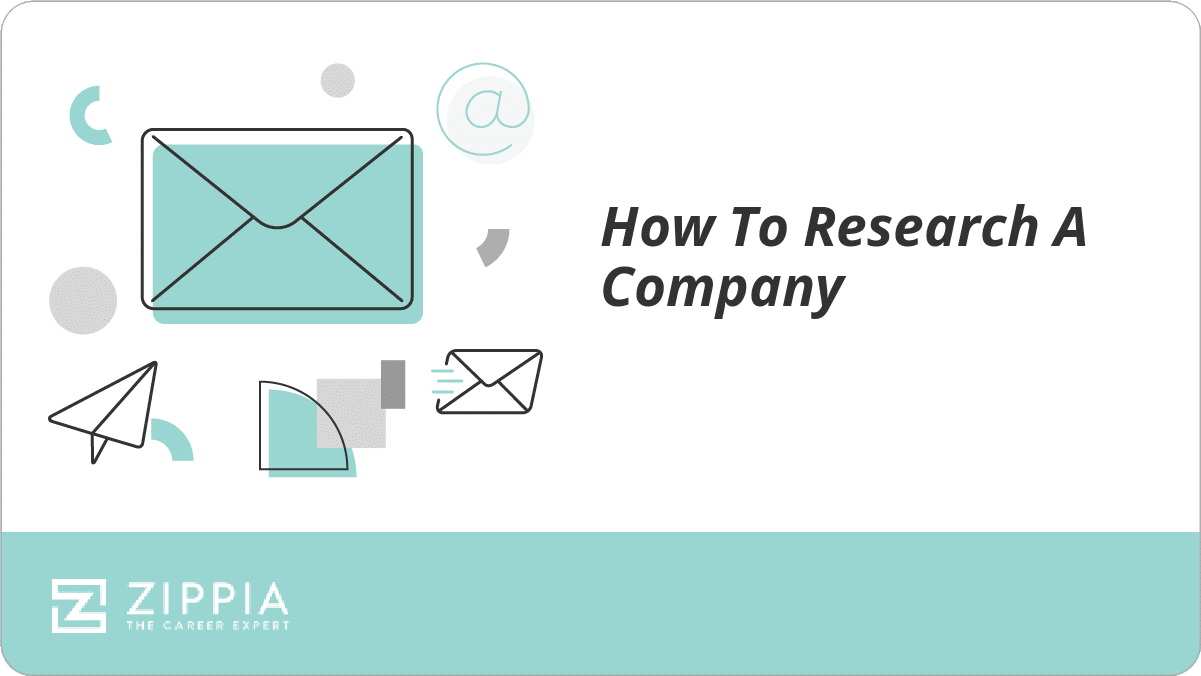
What To Look For When Researching A Company
Tips for researching a company, why researching a company is important.
- Sign Up For More Advice and Jobs
Although researching a company is pretty straightforward, it is still important to break down the process into three key steps.
Schedule time to do research. Give yourself the time to do adequate research. 15 minutes to an hour should be plenty of time. This depends on your level of interest with the company, but be reasonable. Your research does not have to be exhaustive, just enough for you to get a good idea of the company with enough information to help you apply and/or interview.
Go online and look for important factors. When researching a company you want to get an accurate portrayal of the company and make yourself a more informed applicant. Factors such as the company’s values, what benefits it offers, who their competitors are, who works at the company, who is boss , and what type of mission will you help fulfill can all point you in the right direction.
Depending on how much time you have, you may need to prioritize these factors. Base them on what is important to you and what would be important for the job application process.
Take notes and write down questions. Make sure to retain some record of your research. It can be very helpful during the application and interview process. You may find information that will help you tailor your resume and cover letter , or you may find you have questions you would want answered in an interview.
By following these steps you can ensure you are doing your best to learn about a potential employer.
When you’re researching a company, there are a few things you want to be sure to find out about the organization.
Look for the company’s values and make sure they align with yours. This should be one of the most effortless pieces of information to find about an organization, as most companies post them on their websites along with their mission and vision.
Even if they aren’t specifically labeled as such, the pages providing information about the organization should give you some idea about what the company’s focus is.
Once you find them, ask yourself if those are values you can get behind. If you can’t, that may be a sign that this position isn’t a good fit for you.
Research employee benefits the company provides. As you probably know, asking about benefits in the first few interviews is a big no-no. Knowing about the benefits policies early on can be incredibly helpful in your decision-making process , though.
The good news is that many organizations share at least the basics of these policies on their websites, so you can look them up yourself.
Search for articles featuring the company. Reading about an organization from someone else’s perspective can give you more insight than you would get from simply perusing the company’s website.
You’ll be able to find awards they won, achievements they’ve made, and charities they’ve donated to, as well as any negative press they’ve been involved with.
Just make sure you do your research to ensure this information is from reliable sources before you mention it in an interview (and use extreme caution when talking about negative stories).
Look up the company’s main competitors. Having this knowledge at your fingertips can be useful for your general understanding of the company and your ability to answer interview questions , as hiring managers may want to see how well you understand the company and industry.
Find information about your potential future boss. It can be helpful to understand who exactly you’d be working for at the company, so don’t be afraid to do a little research in this arena as well.
Gauge the financial health of the company. While you don’t need to look up enough information to do a full financial analysis or uncover any wrongdoing, getting at least a general idea of the financial state of the organization will help you understand it better and give you a great conversation tool.
Usually, companies (especially large ones) will have publicly available financial reports on their websites. These were made for their investors, and they often include great information about potential growth areas, risky or weak spots, and an overview of their revenue.
Whenever you bring up information that you’ve gleaned from your research in an interview, always make sure you’re adding something relevant and valuable to the conversation.
Don’t just try to show off, because hiring managers can spot that from a mile away and won’t be impressed.
So now that you know what information you’re looking for when you’re researching a company, you need to know how to go about finding it:
Visit the company website. This should always be your first stop because it’s a gold mine of basic information such as the mission, vision, and values, employee directories, news stories, and blog posts.
Browse social media. Take a look at all of the company’s pages, paying special attention to their interactions with their followers. Does it seem like the organization truly cares about its clients by responding to their comments and questions and taking care of complaints?
Look up the company on LinkedIn. When you do this, you’ll not only find posts and articles about the company, but you’ll also be able to see job openings, company statistics, and employees who you may know at the organization.
Make sure you leave yourself plenty of time to research. It may take more digging than you’d think to find all of the information than you’re looking for, so make sure you don’t leave this task until the evening before your interview.
Talk to industry experts about the company you’re applying to. If you can, it may be worth asking someone else in the same industry about their perceptions of the organization and the particular position you’re applying for .
If you ask a competitor, remember that their opinion might be biased, but generally, people who have experience in the industry can provide some valuable insight no matter who they work for.
Make notes of the questions you want to ask. No matter how good your memory is, your brain is going to be running at full capacity on the day of your interview, so make sure you give it some help and write down anything you want to ask as you research.
Researching a company before an interview is important for several reasons:
You give yourself an edge in the application and interview processes. By putting in the work to understand the company, you’ll be able to show better why you would be an asset to the organization. You can do this through both your cover letter and interview .
Also, doing your research ahead of time allows you to avoid asking questions that you could answer for yourself easily with a quick Google search. This way, you show that you’re taking the process seriously and have put in the effort to understand what you’re getting into.
You can confidently answer the interview question, “ What do you know about our company? This is a general interview question, so it’s a good idea to be prepared for it.
When you answer, mention the basics such as their mission, vision, and values, but then add something more specific as well to show that you’ve done your research.
You can learn about the company’s business operations. By researching, you can ask intelligent questions that show that you’re interested in the position and support the organization as a whole.
This is important because hiring managers want someone who will jump in and join the rest of the team in pursuing the larger mission. Plus, a hire who already knows how a company works is easier to train and will become productive much more quickly.
How useful was this post?
Click on a star to rate it!
Average rating / 5. Vote count:
No votes so far! Be the first to rate this post.

Abby is a writer who is passionate about the power of story. Whether it’s communicating complicated topics in a clear way or helping readers connect with another person or place from the comfort of their couch. Abby attended Oral Roberts University in Tulsa, Oklahoma, where she earned a degree in writing with concentrations in journalism and business.
Recent Job Searches
- Registered Nurse Jobs Resume Location
- Truck Driver Jobs Resume Location
- Call Center Representative Jobs Resume Location
- Customer Service Representative Jobs Resume
- Delivery Driver Jobs Resume Location
- Warehouse Worker Jobs Resume Location
- Account Executive Jobs Resume Location
- Sales Associate Jobs Resume Location
- Licensed Practical Nurse Jobs Resume Location
- Company Driver Jobs Resume
Related posts

How To Write A Letter (With Examples)

How To Write A Job Application Letter (With Examples)

How Long Does It Take To Become A Veterinarian?
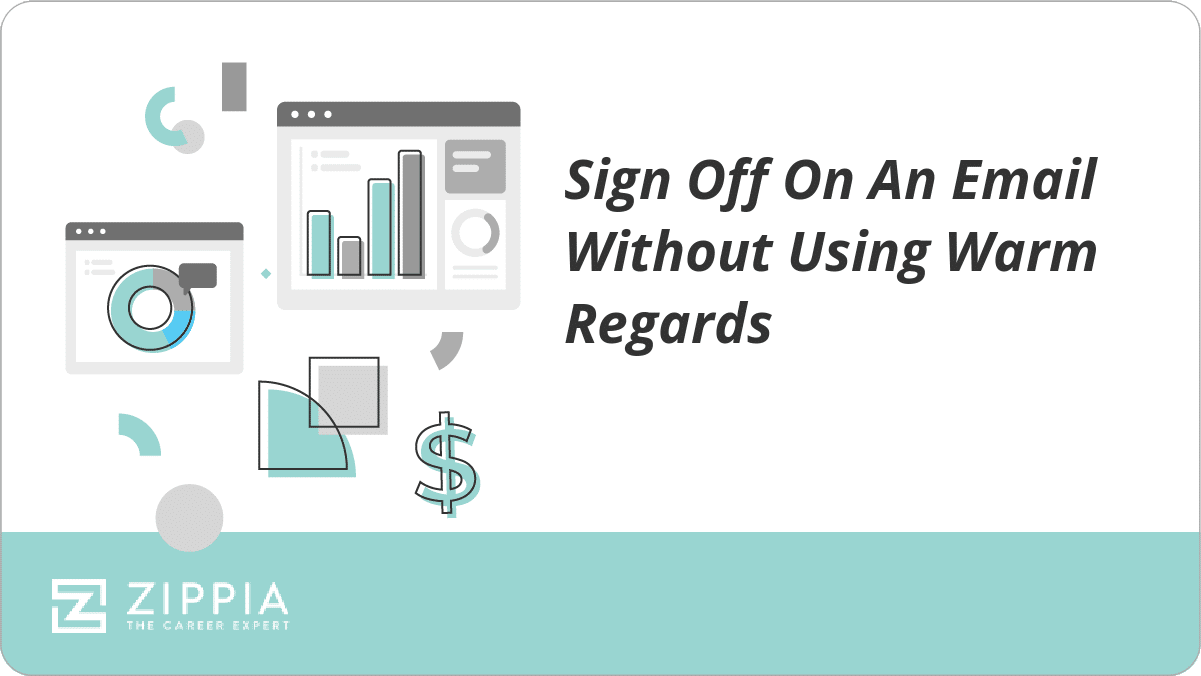
55 Ways To Sign Off On An Email Without Using Warm Regards
- Career Advice >
- Apply For Jobs >
How to Research a Company - Top 9 Tips for 2024

There are a lot of benefits to researching potential employers.
For one, you’re better prepared for the interview. When the interviewer asks if you have any questions about the role or company , you are able to give more educated answers.
Moreover, it becomes much easier to spot red flags about potential employers. If you find that every other review about the company you’re applying for is negative, chances are, they’re not the best employer in the world.
That said, how, exactly do you research a company?
Well, we’re about to teach you just that, starting with:
How to Research a Company - Top 9 Tips
Tip#1. start with the employer’s website.
What’s a better place to start researching a potential employer than their “front door?”
Start by visiting the company’s website and looking for information on:
- What product or service does the company offer? Is it something you personally find interesting?
- How big is the company? Is it a young startup, a multi-national corporation, or something in-between?
- What’s the company culture like? Is the work environment more casual or formal?
- Is there a dress code?
- Does the company have prospective growth opportunities outlined on its website?
In your job search , you can use this information in 2 main ways.
For one, you can decide if a company is a good fit for you culture-wise. If you’re a young professional who hates wearing a suit and loves having a flexible schedule, chances are, Goldman Sachs is NOT your ideal employer. If the company you’re looking into has a culture that doesn’t represent your values, you might want to consider applying elsewhere.
Alternatively, this information can help you ace the interview . It’s almost guaranteed that the interviewer is going to ask you questions about how familiar you are with their brand.
The more you know about the company, the more invested you’ll appear and the more likely it is that the interviewer will pick you over the other candidates.
Tip #2. Find Company Employees via LinkedIn
You can use LinkedIn to find who’s currently working at the company you’re researching.
For example, if you look up “People” under “Apple” on LinkedIn, you’ll get a view of their employees worldwide:

From there, you can filter by specific location (E.g. Austin, Texas), and then filter by role (E.g. Marketing).
So - how can you use this information?
For one, you can connect with someone in the department you’d like to work in and ask them questions about the company, culture, department, or the role you’re applying for.
The key here, though, is not to be too pushy. The people you contact don’t owe you an answer or a reply. However, if you’re being courteous, there’s a very good chance you’re actually going to get one.
Best case scenario, if they like your questions and initiative, they might even refer you to the team lead or department head personally!
Tip #3. Look Up News About the Employer
Look up the company’s name and hit “News” to see what the company has been up to recently.
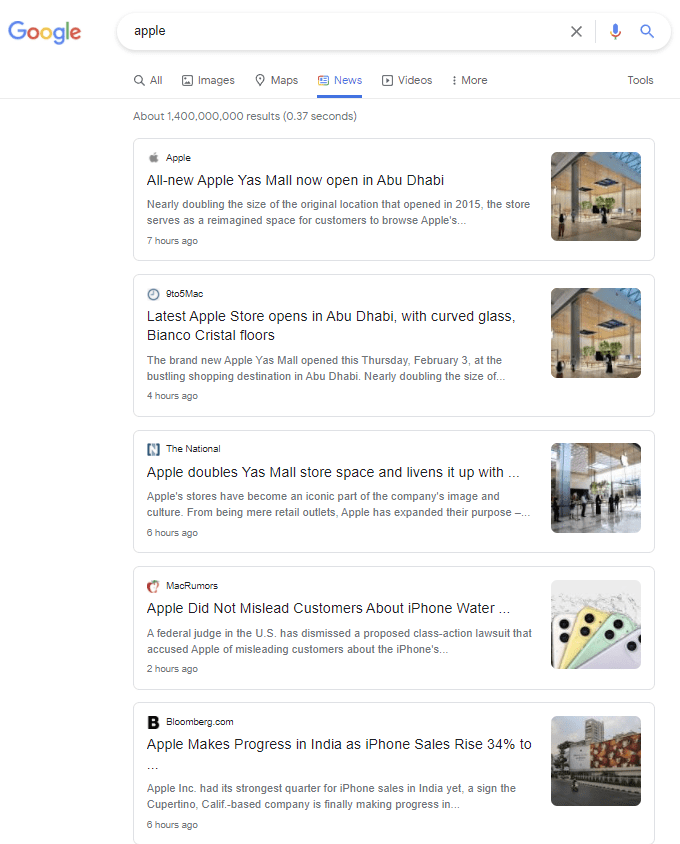
You can also find such information on the News or Blog page on the employer’s website.
There are a lot of ways you can use such information, some of which include:
- You can dodge companies that have had recent scandals.
- You can impress the interviewer with how up-to-date you are with the employer.
- You can learn more about recent company development. For example, what products they’re working on, which countries they’re expanding to, etc.
Tip #4. Look Up Company Reviews on Glassdoor
Glassdoor is an employer review website where you can read information about prospective employers.
You can use it to find reviews about the company and its CEO. For example:

Moreover, you can check out specifics like:
- Salary averages for any given position.
- Reviews of their interview process.
- Reviews of the benefits offered by the company
You can use such information to find an employer you’re going to love, ask for the right salary, or dodge companies with high turnover rates and negative reviews.
Tip #5. Tap Into Your Network
Using LinkedIn, you can see if anyone in your network is working at the company you’re researching.
Then, you can just reach out to them and directly ask questions about the role/employer.
If you’re close with the person you’re reaching out to (or have had professional relations in the past), you can even ask them for a referral directly!
Tip #6. Research Company’s Social Media Pages
Go through the company’s social media profiles (Facebook, Twitter, Instagram, and LinkedIn) to get a grasp of how they communicate with their target demographics.
Follow them to get updates whenever they post anything. You can even like and comment on their posts which can help you fall into their radar, especially if they’re a small team.
Tip #7. Look Up Posts on Social Media
You can look up what people are discussing about the company on social media to get a more unbiased view of the organization.
For example, you could Google something like this: site:reddit.com "apple” "job" to get a complete list of all threads on Reddit where people are discussing Apple as an employer:

Tip #8. Get an Edge on the Interview Process With Glassdoor
Using Glassdoor Interview Q&A Section , you can find the exact questions employers ask their interviewees. For example:
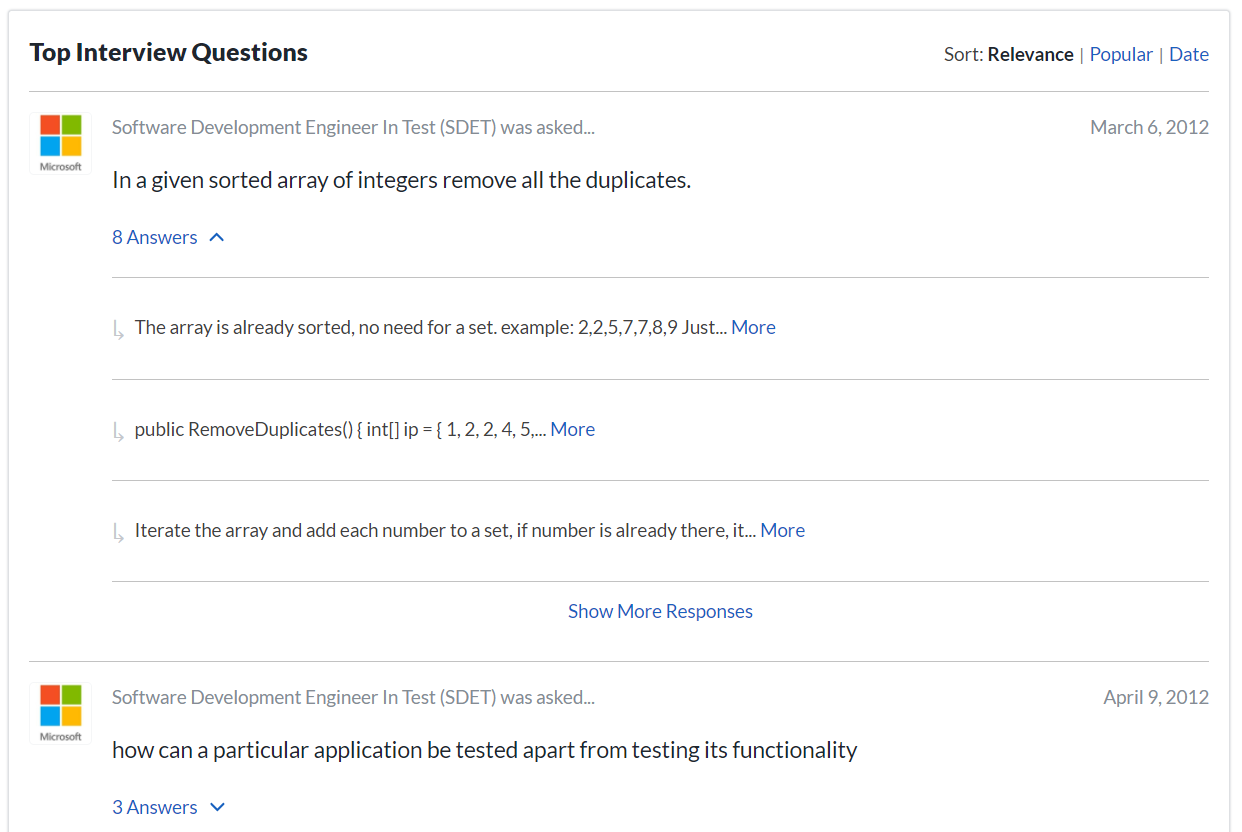
You can use this to better prepare for the upcoming interview, as well as get a general idea of what kind of questions you’re going to be asked.
Tip #9. Learn About Company Salary Averages
You can use a tool like
to find salary averages for the company you’re applying for based on department or role:

You can then take advantage of this information to ask for the right sum and avoid getting low-balled.
Why Research Employers? Top 4 Reasons
At this point, the reason for researching employers should be pretty self-explanatory, but we thought we’d cover the topic just in case!
The 4 main reasons for researching a company are:
- Get an edge over the interview. Employers love it when you’re knowledgeable about their company. After all, they want to hire people who want to work there specifically, not the ones that are just randomly applying everywhere. The more company knowledge you demonstrate during the interview, the more likely it is that you’ll get the job.
- Uncover red flags (and avoid bad employers). You can find a lot of skeletons in company closets if you just do some research online. This can actually help you save a ton of time and effort from applying (or getting hired) at the wrong place.
- Find the right job for you. There are a lot of companies out there - not all of them are the right fit for you. By researching companies online, you’ll be able to tell right from wrong more easily.
- Negotiate a better salary. You can find information on average salaries at a specific company online, so you have a better idea of what kind of range you can ask for.
Key Takeaways
And that just about sums up all you need to know about researching a company online! Before you go, though, let’s do a quick recap of what we learned:
- When researching an employer, start by looking at their website and social media pages to learn more about their culture and product/service.
- Look up news about the company to avoid employers with recent scandals.
- Find company reviews on Glassdoor and uncover potential employer red flags.
- Use LinkedIn to find people who work at the company you’re applying for and reach out to ask questions about the job or the employer.
- Use all the information you learn from researching the company to get an edge over the interview and negotiate a better salary.

To provide a safer experience, the best content and great communication, we use cookies. Learn how we use them for non-authenticated users.
- Library Hours
- Strategic Plan
- Giving to the Libraries
- Jobs at the Libraries
- Find Your Librarian
- View All →
- Google Scholar
- Research Guides
- Textbook/Reserves
- Government Documents
- Get It For Me
- Print/Copy/Scan
- Renew Materials
- Study Rooms
- Use a Computer
- Borrow Tech Gear
- Student Services
- Faculty Services
- Users with Disabilities
- Visitors & Alumni
- Special Collections
- Find Information
Company Research
- Getting Started
Availability of Company Information
Sources of company information, evaluate sources.
- SEC Filings & Financials
- Annual & CSR Reports
- Earnings Conference Calls
- Company Directories
- Corporate Family
- International Companies
- Private Companies
- Citing in APA
How much information you can find about a company depends on these factors:

Public Company (publicly-held, listed)
- Sells shares to general public to raise capital
- Regulated by the Securities and Exchange Commission (SEC)
- Required to disclose financial information to SEC and shareholders
- Listed on one of stock exchanges and has a ticker symbol
Private Company (privately-held, unlisted)
- May be owned by founders, employees , and large investors (venture capitalists)
- No disclosure of information is required
Company status may change over time due to sale, mergers, acquisitions, or going out of business. The easiest way to determine whether a U.S. company is public is to google a company name ticker, since a public company has to have a ticker symbol, and then confirm the current status using SEC's EDGAR tool. A public company has a recent 10K or 10Q.
- EDGAR Search Tools
To better understand what kind of information may (or may not) be available, consider the sources. Who, why, when, and how produced the information should play a role in evaluating reliability and validity of sources. Multiple free and subscription resources are available:
- What the company tells you: company websites, promotional materials, catalogs, price lists, LinkedIn and other social media, and more
- What the company keeps confidential: internal information, trade secrets, and more
- What the company has to disclose to the government: 10Q, 10K, other SEC filings, economic census, state filings, conference earning calls
- What others say about the company: news, blogs, LinkedIn and other social media, research articles, books, market research, analyst reports, government, industry and trade experts, and more
A quick and critical evaluation of your sources is an important research skill. This easy-to-remember framework may help:
- What is the purpose of your research project? What is the expected output, for example, a presentation, report, analysis, research paper, etc.?
- Are you expected to use any specific sources?
- What sources may have relevant information?
- Is the information you are finding relevant to your topic and research goals?
- How deeply do you need to dig in? How much time do you have and what is the deadline?
- Are the sources credible?
- Are the methods of collecting data and analysis disclosed?
- Is the methodology sound?
- 'Who cares' enough to collect particular data or information? This question helps identify relevant sources.
- Is the author qualified to write on a topic?
- What are their credentials and qualifications?
- What are author's affiliations and how these affiliations influence their work and analysis?
- Do you need current or historical data?
- When was the information created/updated? Is it out of date?
- Have any major events happened since the information was published? What is the effect of those events?
- Why was the information created?
- Is there a discernible conflict of interest?
- It the topic presented from alternative viewpoints?
- Is the language neutral or emotionally "loaded"?
- Is it factual or opinion-based?
Multiple terms may be used to describe companies, each with a varying meaning and in different contexts.
Company : a business enterprise; an inclusive term for any type of business organization which can be a proprietorship, a partnership, or a corporation.
Closely-held company : a publicly-traded or private company where a small group of shareholders controls the majority of shares.
Enterprise : a company, firm, or other commercial entity, whether private or public, for profit or nonprofit. Often applied to a newly formed venture. The term is used by the U.S. Bureau of Census to designate entities consisting of many physical business locations, or establishments.
Establishment : a single physical location where business is conducted, or where services are performed. The term is used by the U.S. Bureau of Census for any business location that has one or more employees. Many businesses operate in multiple establishments. The establishment definition varies among industry groups because of differences in structure or standard practices.
Firm : A firm is a business organization, such as a corporation, limited liability company or partnership, that sells goods or services to make a profit. While most firms have just one location, a single firm can consist of one or more establishments, as long as they fall under the same ownership and, typically utilize the same Employer Identification Number (EIN). The title "firm" is typically associated with business organizations that practice law, but the term can be used for a wide variety or business operation units, such as accounting. "Firm" is often used interchangeably with "business" or "enterprise." (Source: Investopedia )
Franchise : an arrangement in which an independent business operates one or more establishments under license by the parent company, which may provide training, advertising, and financing.
Legal Structure
Corporation : a legal entity created by state charter, endowed with specific powers and capable of surviving the deaths of its owners. May be profit and nonprofit (educational, scientific, charitable and religious). Stockholders and employees of a corporation cannot be held personally responsible for any debt or lawsuits faced by the company.
Partnership : an association of two or more people for the purpose of jointly owning a business.
Sole proprietorship : the simplest and most common form of business organization. The major legal requirement is that the founder register the business name with the local government where the company will reside.
Corporate Family Structure
(see more under under Corporate Family tab)
Parent Company : a company that controls or owns another company or companies.
Subsidiary : a corporation in which more than 50% of its voting stock is owned by another company. The subsidiary may have a different name than the controlling corporation.
Wholly owned subsidiary : 100 % of the firm's stock or assets have been acquired by the parent.
- << Previous: Getting Started
- Next: SEC Filings & Financials >>
- Last Updated: Mar 31, 2024 12:44 PM
- URL: https://libguides.utsa.edu/company_research
- Library Locations
- Staff Directory
- 508 Compliance
- Site Search
- © The University of Texas at San Antonio
- Information: 210-458-4011
- Campus Alerts
- Required Links
- UTSA Policies
- Report Fraud
- International edition
- Australia edition
- Europe edition

How to research a company: top tips on gathering information about employers
Researching a company doesn't just prove to an employer you're enthusiastic about the opportunity. It also helps you pitch your application and perform better at the interview, demonstrating your match to the organisation's culture and values.
In 'How I landed a place on HSBC's graduate programme' ,
Belal Kulasy said: "I made sure I knew exactly what the bank valued and how it operates, and I tried to match these values to the experiences that I had. This showed the company that I would fit well within their organisation."
Much of the information you'll need to be an interested and well-informed candidate is easily available online.
The company itself
The job description is an obvious starting point. Does the role fit within your overall career strategy? Will it give you career-building opportunities or allow you to develop new, marketable skills? Understanding the role requirements and potential also help you work out where your strengths intersect with company needs, and whether you'll need to address any skills or experience gaps in your application.
However, if the job description is vague, be prepared to dig deeper. Contact the recruiter or HR department with a brief, polite email to ask for more detail.
Read the company website and press releases for information about the company's history and progress: innovations, key milestones and so on, as well as their corporate values, often written into mission or vision statements. This will help you with the almost inevitable interview question "Tell us what you know about the company" or "Why are you interested in working with us?" Check out the 'Working with us' page – not just to find out about vacancies or the typical application process, but also an idea of what they look for in employees, in terms of technical skills or personal attributes.
Industry associations
Read publications, newsletters or blogs for in-depth information and analysis on the health of the sector as a whole, as well as for snippets of news or gossip. Find out all you can about the main players, current threats or opportunities, which companies are doing well, and so on. This knowledge will help you ask thoughtful questions at interviews and shows your interest in working in the sector.
Social networks
Social networks help you develop contacts who can share information and they enable you to build relationships with other industry professionals and with those who have hiring authority. LinkedIn is especially useful for this, with recent data showing a high percentage of members aged between 25 and 54 in higher income groups.
On LinkedIn, use the company tab to search by industry keyword for a list of companies sorted by relevance (relationship to you, for example). You can see primary or shared connections, and then request an introduction to that shared connection to get an insider's view on working for the company. Digging around on the company's page also gives you useful information on hiring statistics and patterns (where employees come from or go to), annual company growth, key skills of employees, and job postings.
Other social networks such as Google+ and BraveNewTalent
allow you to connect with employers directly. Use Twitter to follow people within companies you're interested in, and the company pages on Facebook to find out more about their working culture.
Review sites
Sites like Glassdoor (you'll need to search for UK companies) and What Are They Really Like (WATRL) provide employee reviews on salaries, working environments, along with other insights.
This content is brought to you by Guardian Professional . To get more content and advice like this direct to your inbox, sign up for our weekly Careers update .
- Guardian Careers
- The Careers Blog
- Career choices
- Applications
Comments (…)
Most viewed.
- Search Search Please fill out this field.
- Career Planning
- Finding a Job
How and Why to Research a Company
:max_bytes(150000):strip_icc():format(webp)/ADHeadshot-Cropped-b80e40469d5b4852a68f94ad69d6e8bd.jpg)
Why spend time on company research when you're job hunting? There are several good reasons why it's worth investigating companies, all of which are important to your successful job search.
Reasons to Research Companies
First of all, spending some time looking for and at employers will give you an idea of which companies are in your industries and fields of choice. You’ll also be able to determine which companies are hiring and what types of job openings they have available.
If you're applying for a position, you’ll want to find out everything you can about the company before you sit down for an interview . Knowing more about the company will make you feel more comfortable, and you’ll be able to ask questions that show you’re truly interested in the job .
Also, after all your research, you will be a well-prepared candidate for the position. Knowing specifics about the company’s goals, mission, products, policies, and company culture will impress upon the hiring manager your keen interest in the position, and your ability to assimilate quickly into a productive role.
Focus on Your Industry - or Your Area of Interest and Expertise
Spend some of your valuable company research time investigating the needs and benefits of organizations in your industry that appear to offer much more than the others. Do they specifically need people in your field? Or are they generalizing to, as they say, "cherry pick the workforce."
If you can, talk to people who work at a company to determine whether it's a place you want to work and if they would appreciate your particular skills. You don't want to find yourself welcomed one day and then laid off six months later.
It’s also helpful to learn more about the company history, financial stability, products and services, personnel, and perhaps some information about the company culture to see how you would fit in if you’re hired. Most companies, large and small, have websites where they showcase career opportunities and the company’s mission.
Use Your Connections
If you have a connection that will help you find inside information, use it. Do you know someone who works there? Ask them what the company culture is like, and how accurate and current the information on their website is. If you're a college graduate, ask your Career Office if they can give you a list of alumni who work at your target company. Then call or email those alumni to ask for insight, advice, and assistance.
Use Directories Which Will Help You Find Those Companies
You can search Hoover's Online by company name or keyword. Superpages allows you to search by business name, category or location. Vault is a website that offers job seekers an in-depth look inside some of the hottest industries. They also provide career advice, along with company and industry profiles.
If you're interested in big business, you can browse the Fortune 500 top companies list. Then take a look at the snapshot for company details, revenues and contact information. Fortune provides similar lists for the 100 Fastest Growing Companies and the 100 Best Companies to Work For .
Want to Ace That Interview?
Preparing for an interview is certainly a crucial reason to research employers. You'll want to know as much about your potential employer as possible so that you can start your interview on good footing.
Standard interview questions are "What do you know about us?" and "Why do you want to work here?" Research will enable you to have an informed, detailed response – and ask the right questions, remember an interview is a dialogue. It’s as important for you to ensure the job is a good fit as it is for the employer.
Read anything and everything you can about your target company. Use Google to find the employer's website and check the company’s social media profiles. Then review the sites to see what the company is saying about itself.
Many times, you’ll find articles or links about new products or technologies where the company is mentioned. That’s a good place to explore for more in-depth research. Next, take a look at what the rest of the world is saying. Vault Reports is a good resource to find specific, detailed information about a particular employer.
Spending a little extra time to research the company before you apply and interview can make the difference between getting noticed by your dream company or getting passed over.
How to Research a Company for an Interview: 10 Steps
By Biron Clark
Published: November 8, 2023
Interview Preparation

Biron Clark
Writer & Career Coach
In the next 10 minutes, I’m going to show you exactly how to research a company for your job interview.
You want to go into the interview feeling ready and confident, and you don’t want to embarrass yourself.
That’s what good pre-interview research can do for you.
But what’s the fastest and easiest way to get enough information about a company to avoid interview mistakes and make a great first impression? And what exactly should you be researching?
Keep reading for everything you need to know…
How to Research a Company for a Job Interview
1. research the company website.
Go to the business’ website and find out about what products or services they provide. What do they sell and how do they make money? Why might the company’s clients choose them?
Learn anything you can about the company culture , too. Click buttons like “About Us” or “Meet Our Team” when you’re on the company website.
Then visit their “Careers” section to see what jobs are posted in general. Make sure you’re familiar with the job description and get a feel for the other jobs they’re hiring for.
Finally, see if the company has a mission statement. Knowing the company’s mission will help you understand what they care most about, so that you can show these traits in the job interview.
This is the longest step in the process of researching a company, but it’ll give you a ton of information you can use in your answers, and knowing more about them will help you explain why you wanted to apply for the job .
2. Search Google News for Recent Company Developments
This is a relatively short step, but still important for how to research a company before your interview.
As you conduct company research, go to Google News to read some recent developments and press releases, so you can get a sense of what the company is working on.
Find a piece of good news, a recent change, acquisition or new project, or anything else you can find about the company online.
You’ll notice more info available for large companies, but you may still find valuable news articles and stories for smaller companies, too.
Your goal in this research, for each of your target companies, is to find one action they took recently that you can ask about in the interview.
For example, you’d ask, “I read you recently did ___, can you tell me more about that?”
They’ll be impressed that you know the latest news about them.
Most job seekers are asking boring, generic questions in the interview (like, “What is your company’s mission?”)
So if you can ask a question about a recent news story, it’s going to set you apart.
Here are 27 more unique questions job seekers can ask in the interview.
That brings me to one other piece of job search and career advice: Never ask a question that could be answered on the company’s website.
3. Review the Company’s Social Media Accounts
Next, research the company’s Facebook, LinkedIn, Twitter, and other social profiles to see recent news you might have missed on Google News in step 2. You might see pictures of employee outings too, etc. You’ll get a great sense of the company culture and the type of people who work there.
This will give you more fuel and ideas for questions you can ask in the interview too.
For example, you could ask, “I saw on Facebook you recently had a company charity event. Can you tell me about what else the company does to facilitate team-building and/or charitable giving in the community? It’s great that those are a part of your company’s values. That’s something I’m looking for in an employer.”
You can also look for the company on YouTube. Do a quick search and see if they have a channel.
More and more companies are sharing video content, so this is a worthwhile step in terms of how to research a company very thoroughly before you talk to them.
You might also see their office in a video which will make you more comfortable when you arrive for an interview. You’ll feel like you’ve been there before.
4. Competitor Research
If you really want to impress the company with how much you researched them before the interview, head over to similarweb.com , type the company name or website into the search bar, and then find the button that says “similar sites”.
Click it and you’ll see companies that are similar to the company you’re interviewing at. Try to find a few key differences and similarities, so you can show you understand the whole marketplace and industry, not just the company you’re interviewing with.
If you do this, most hiring managers will be VERY impressed.
If you’re interviewing in a new industry this becomes even more important. But it’s a great step for anyone who wants to research a company before a job interview.
5. Research Employees on LinkedIn
Search on LinkedIn to find employees of the company. Better yet, find people in the same type of group or role that you’re interviewing for. What type of background do they have? You might spot a trend for the type of person a company likes to hire.
This research will help you understand what the company looks for in the hiring process, so that you’ll be better prepared for questions they throw at you in the interview.
LinkedIn isn’t just a great job search resource , it’s also a powerful research tool. If you don’t already have an account that’s active and up-to-date, you should definitely make one. If you’re not convinced, here are 5 reasons you should use LinkedIn .
6. Research the Hiring Manager
Next, use LinkedIn to research the hiring manager’s background.
How long have they been with the company?
What’s their educational background?
What previous jobs have they worked to get to the point they’re at?
This is a great way to prepare to pass your interview . You might even see something you have in common with the hiring manager, such as a sport you played in college.
And if not, you’ll still know more about them than most candidates going in for the interview. So it’ll be easier to bond and build rapport, or talk about topics that they’re familiar with.
7. Industry Research
Next, if you’re attending a job interview in an unfamiliar industry, you should go beyond researching the company and also dig into the industry overall.
Browse social media accounts of other businesses in the industry, read a few trade publications online, see what types of jobs are posted in this industry, and more.
What types of products and services does the industry provide in general?
What are some of the latest developments happening?
What are some common types of jobs in the industry?
You can look at industry news in Google, check company social media accounts, and more to gather this information.
8. Research the Company’s Job Interview Process
There are a variety of websites that allow job seekers to write about their job search experience and which interview questions they faced. So I recommend searching Google for terms like “<Company Name> interview questions” and “<Company Name> interview process.”
You won’t find information about this for every employer, but you should find some hints about the interview process for most large employers, which can be a big aid in your job search.
Then, you’ll know how to better prepare for your job interview to show you’re a fit for the company’s culture and role.
9. Read Employee Reviews
Next, consider visiting a site like Glassdoor.com to read reviews from current and past employees.
This may give you more hints about how the company operates, which will help you prepare great interview answers.
You’ll also gain valuable information to help you decide if you do or don’t want to work for this company!
You may spot a red flag or two that you’d like to ask about in the interview.
You wouldn’t have found this on a casual visit to the company’s website. So reading reviews from real employees will give you a better understanding of what your life will be like if you accept their job.
Those are the best steps you can take for pre-interview company research. I recommend doing everything above if you have time.

10. Additional Research for Public Companies
If a company is publicly traded, it must release an annual report, quarterly financial statements, and more.
You can see their stock price, read recent stock news, and more.
For public companies, you’ll often see an “investor relations” button when you visit the company website (usually in the site footer).
You can also search for the company name on a website like Google Finance to read about their financial health and explore recent financial data and statements.
This doesn’t need to be an in-depth, time-consuming step when researching a company, but it’s worth noting whether they’re publicly traded or not, and how the company’s stock is doing.
Final Step: Review Your Company Research
Now you know what to research about a company before the interview.
As a final step, make sure you can answer these questions about a company:
- Who is the CEO ?
- When/why was the company founded?
- Does the company have one or multiple locations? And where are they headquartered?
- How does the company make money? What do they sell and who is their typical customer?
- Why do their customers choose them?
- How are they different from their competitors?
- How would you describe the company culture?
- Does the company have a mission statement or a reason why they were founded?
- What do you know about the hiring manager’s background? How long have they been with the company?
Use that as a checklist to make sure you’ve researched the company enough before your interview.
Now that you know how to research a company before a job interview, you’re going to be able to make a better impression on recruiters and hiring managers, and turn more interviews into job offers !

About the Author
Read more articles by Biron Clark
2 thoughts on “How to Research a Company for an Interview: 10 Steps”
This was VERY resourceful. Thanks so much for the helpful tips.
Great list. Thank you!
Comments are closed.

- Join the AMA
- Find learning by topic
- Free learning resources for members
- Certification
- Training for teams
- Why learn with the AMA?
- Marketing News
- Academic Journals
- Guides & eBooks
- Marketing Job Board
- Academic Job Board
- AMA Foundation
- Diversity, Equity and Inclusion
- Collegiate Resources
- Awards and Scholarships
- Sponsorship Opportunities
- Strategic Partnerships
We noticed that you are using Internet Explorer 11 or older that is not support any longer. Please consider using an alternative such as Microsoft Edge, Chrome, or Firefox.

2020 Top 50 U.S. Market Research and Data Analytics Companies
Diane Bowers

A full ranking of the top market research and data analytics companies in the U.S. for 2020
The “2020 Top 50 U.S. Report”—formerly known as “The Gold Report”—is developed by Diane Bowers and produced in partnership with the Insights Association and Michigan State University . The report is also sponsored by the AMA, ESOMAR and the Global Research Business Network . The report includes a ranking of the top 50 companies, a breakdown of trends by Bowers , and an analysis of the market research and analytics industry by Michael Brereton, Melanie Courtright and Reg Baker.
50. RTi Research
Founded: 1979 2019 U.S. revenue: $12.9 million Percent change from 2018: -3% 2019 non-U.S. revenue: — Percent from outside U.S.: — 2019 worldwide revenue: $12.9 million U.S. employees: 45
In a world awash in data, the challenge is to turn data into something meaningful, something that can be communicated simply and acted upon effectively. RTi Research meets that challenge head-on, turning data into meaning through smart research design, flawless execution and innovative storytelling. Everything the company does is aimed at helping its clients move their ideas and insights through their organizations to influence change.
RTi has conducted research in just about every category in the U.S. and globally. Informed by 40 years of experience across categories and cultures, RTi knows what works and what doesn’t, when to leverage new technology and methods, and when traditional approaches are best.
49. Hypothesis
Founded: 2000 2019 U.S. revenue: $18.3 million Percent change from 2018: -4.7% 2019 non-U.S. revenue: — Percent from outside U.S.: — 2019 worldwide revenue: $18.3 million U.S. employees: 61
Hypothesis uses insights, strategy and design to help important brands do amazing things. The company specializes in tough questions that take creative, multidimensional approaches, thoughtful strategy and a broad business perspective. Hypothesis’ approach combines inventive consumer-centric qualitative research, advanced analytics, strategic thinking and data visualization. Its award-winning design team translates complex information into compelling, easy-to-understand deliverables to socialize learnings and engage teams.
In 2018, Hypothesis added important new capabilities with the launch of Momentum, a strategy that turns insight into application with downstream marketing and implementation planning. The Momentum team has worked alongside Hypothesis consultants on strategic engagements with clients focused on brand strategy, product development, and led dozens of workshops with senior and C-level executives to socialize insights and ideate on next steps.
In 2019, Hypothesis’ focus on growth continued with its expansion to the Midwest and establishment of its Chicago office. From this office, the company will be able to service new and current clients in the Midwest and on the East Coast.
48. Bellomy Research
Founded: 1976 2019 U.S. revenue: $21 million Percent change from 2018: 1.4% 2019 non-U.S. revenue: — Percent from outside U.S.: — 2019 worldwide revenue: $21 million U.S. employees: 116
Bellomy is a privately held, family-owned, full-service market intelligence company. Bellomy focuses on driving successful business outcomes through the design and delivery of solutions that yield deeper customer understanding. The company surrounds its clients’ business challenges with an unparalleled mix of knowledge and experience, marketing science and proprietary research technology.
Bellomy’s work involves both B2C and B2B environments—with qualitative and quantitative insight solutions spanning market segmentation, customer experience and journeys (including digital user experiences), brand equity, product innovation, shopper insights, marketing optimization, social research platforms and research technology. Bellomy works with clients across a broad range of categories and industries including consumer packaged goods, financial services, automotive, retail, restaurant and hospitality, telecommunications and technology, apparel and textiles, utilities, healthcare, insurance and home improvement.
Bellomy serves as an extension of its clients’ marketing research and customer experience departments by integrating a broad set of capabilities and areas of expertise, including segmentation, customer (and digital experience), shopper insights, social research platforms, brand equity, product innovation and marketing optimization. In addition, Bellomy clients leverage SmartIDEAS, the firm’s enterprise consumer knowledge and insight platform.
47. Edelman Intelligence
Founded: 1999 2019 U.S. revenue: $21 million Percent change from 2018: 12.9% 2019 non-U.S. revenue: $11.5 million Percent from outside U.S.: 35.4% 2019 worldwide revenue: $32.5 million U.S. employees: 131
Edelman Intelligence (EI) is the global research and analytics consultancy of Edelman, the world’s largest global communications firm. Based in New York, with employees in 18 offices internationally, EI houses more than 200 consultants, strategists, researchers, data scientists, data visualization specialists and analysts worldwide. Its specialists are method-agnostic and leverage the best of primary and secondary research, advanced analytics and business science to solve business and communications issues for its clients. EI’s offering spans the full spectrum of client needs, from mapping the current environment and targeting key audiences, to optimizing content and measuring business impact.
EI partners with early-stage start-ups and Fortune 100 companies alike, providing strategic research, analytics, and insights-based marketing and communications counsel for a broad range of stakeholders and scopes, including government and public affairs, corporate reputation and risk strategy, crisis and issues management, employee experience and talent advisory, executive positioning, strategic communications and public relations, marketing and branding strategy, customer experience and insights, mergers, acquisitions and market entry strategy and more.
Key accomplishments in 2019 included advancement of its Edelman Trust Management (ETM) capabilities, including an evolution of its offering focused specifically on providing guidance for measuring and building trust in brands. Developed building from its 20-plus years studying trust through the Edelman Trust Barometer and the initial iteration of ETM (which explores corporate trust), this proprietary model for brand trust measurement was created in partnership with renowned academics from Harvard Business School and INSEAD, Edelman Brand experts and external marketing thought leaders. In recent months, this model has been engineered to consider fundamental transformations to consumer/brand relationship dynamics that the COVID-19 pandemic has accelerated.
46. KS&R
Founded: 1983 2019 U.S. revenue: $21.7 million Percent change from 2018: -1.4% 2019 non-U.S. revenue: $3.6 million Percent from outside U.S.: 14.2% 2019 worldwide revenue: $25.3 million U.S. employees: 100
KS&R is a privately held strategic consultancy and full-service marketing research company. For nine consecutive years, KS&R has received the highest Gold Index composite score of any provider in the Prevision/Inside Research survey of marketing research buyers. This is a testament to the company’s passion for excellence and client-first business philosophy—wherein KS&R empowers its clients with timely, fact-based insights so they can make smarter decisions and be confident in their actions.
KS&R creates and executes global custom market research solutions for some of the best-known corporations in the world in more than 100 countries and 50 languages. It has extensive and diverse industry experience with particular strength in healthcare (pharma and device), technology, entercom, transportation, professional services, and retail and e-commerce. Team members often include business strategists with client-side experience and deep industry knowledge.
In 2019, KS&R leveraged its expansive network of pharmacy panels to build world-class capabilities for pharma inventory measurement and healthcare insights. Its marketing scientists have driven marked advances in pricing decision support, which have now been validated by positive in-market results. KS&R expanded its portfolio to include insights fusion across multiple channels of content (primary research, social media, web-based information, etc.). And finally, it introduced its KS&R Win-Loss program that provides actionable insights for how organizations can improve their value proposition and sales performance to close more deals.
Founded: 1911 2019 U.S. revenue: $22.7 million Percent change from 2018: 12.9% 2019 non-U.S. revenue: — Percent from outside U.S.: — 2019 worldwide revenue: $22.7 million U.S. employees: 78
NAXION guides strategic business decisions globally in healthcare, information technology, financial services, energy, heavy equipment and other B2B markets, drawing on depth of marketing experience in key verticals and skilled application of sophisticated and inventive methodologies. The firm’s NAscence Group helps life science innovators develop commercialization strategy through clinical trials design and selection of target indications, forecasting, brand planning and other research-based consulting services.
Engagements routinely include market segmentation, opportunity assessment and innovation, demand forecasting and pricing, positioning, brand health, market monitoring and lifecycle management. The firm deploys multiple data streams including primary research (qualitative and quantitative), secondary data, customer databases and other complex datasets to develop an integrative perspective on business problems. The firm also builds custom panels for B2B markets.
Project leaders with sector experience and research proficiency are supported by in-house methodologists and a wide portfolio of advanced analytic tools, including proprietary modeling services and software, all of them highly customized. The firm continues to invest significant resources in intellectual capital to enhance enterprise decision support with cutting-edge methods, including specialized “small data” choice models, new predictive techniques using big data and brand-customized text analytics. Its Farsight suite supports the building of highly dynamic models capable of producing forecasts for complex market scenarios, including paradigm-shift technologies, and gives market monitoring programs a forward-looking perspective that guides timely market interventions. Other services include litigation and regulatory support, often involving expert testimony in cases involving trademark confusion, deceptive advertising and brand equity. NAXION’s strong commitment to operational excellence is reflected in ISO certification and in-house operations capabilities to deliver exceptional levels of quality control.
Founded: 1991 2019 U.S. revenue: $24.2 million Percent change from 2018: -3.6% 2019 non-U.S. revenue: $1.2 million Percent from outside U.S.: 4.7% 2019 worldwide revenue: $25.4 million U.S. employees: 144
Gongos is a consultative agency that places customers at the heart of business strategy. Partnering with insights, analytics, marketing, strategy and customer experience groups, Gongos operationalizes customer centricity by helping companies both understand their customer needs and deliver on them better than anyone else.
From product innovation to portfolio management, customer experience to consumer journeys, pricing strategies to marketing optimization, and trend analysis to predictive modeling, Gongos provides both outside-in and inside-out approaches across organizations to drive greater customer attraction, retention and lifetime value.
Gongos further serves as a translator to help cross-functional teams fuel the competency to gain and apply consumer wisdom, transform decisions into action and navigate organizational change. Coalescing enterprise data with primary research and curating insights for multiple audiences further empowers stakeholders to achieve greater ROI by ensuring information is designed to influence actions and behaviors from executives to the frontline.
Gongos’ consultative tools stem from change management principles that help organizations navigate the transformation often necessary to create a more outside-in perspective as they reorient around the customer. Gongos’ approaches to engage multiple audiences include communication strategies and tactics grounded in frameworks such as its adoption-to-advocacy model and human-centered design.
43. Maru/Matchbox **
Founded: 2016 2019 U.S. revenue: $28 million Percent change from 2018: 3.7% 2019 non-U.S. revenue: $14 million Percent from outside U.S.: 33.3% 2019 worldwide revenue: $42 million U.S. employees: 150
Maru/Matchbox began disrupting the market research industry in 2000. Powered by proprietary technology, its expert teams are deeply invested in key sectors of the economy, including consumer goods and services, financial services, retail, technology, healthcare, public services, and media and entertainment. Maru/Marchbox provides organizations with the tools and insights to connect with the people that matter most, so they can build and maintain a competitive advantage.
In 2019, Maru/Matchbox released a series of innovative research solutions.
- Digital Media Measurement is a campaign evaluation approach that enables clients to better understand how content, channels and brands interact to deliver effective communication.
- Creative Insight measures people’s implicit and explicit responses to advertising, giving clients a complete picture of how their ad is working. It is designed to evaluate any type of ad or brand communication, across all channels, with best-in-class benchmarks.
- Lissted analyzes how members of communities relevant to clients react to content, tweets and even websites.
- Brand Emotion utilizes visual semiotics to identify and leverage the emotional profile of a brand.
Maru/Matchbox continues to demonstrate innovation and thought leadership through relentless publication of articles and whitepapers.
42. Chadwick Martin Bailey (CMB)
Founded: 1984 2019 U.S. revenue: $28.7 million Percent change from 2018: 20.6% 2019 non-U.S. revenue: — Percent from outside U.S.: — 2019 worldwide revenue: $28.7 million U.S. employees: 90
CMB is a research and strategy firm, helping the world’s leading brands engage, innovate and grow amid deep disruption. The company leverages the best of advanced analytics, consumer psychology and market strategy to tackle critical business initiatives, including market identification, segmentation, brand health, loyalty and advocacy, and product and service development.
For more than 35 years, CMB has helped the most successful brands and their executives give voice to their market through a relentless business decision focus, creative problem-solving and storytelling, deeply consultative approach and flawless execution. With dedicated financial services, media and entertainment, tech and telecom, retail and healthcare practices, CMB’s expert teams understand the complex and evolving technological, social, cultural and economic forces that drive disruption and create opportunity.
In 2020, CMB continued its growth trajectory, including building expertise in gaming and digital platforms and expanding its qualitative and advanced analytics teams. A thought leader in the application of consumer psychology to real world business issues, CMB conducted self-funded research among tens of thousands of consumers to capture the four core benefits that motivate decision-making—identity, emotion, social and functional—providing an in-depth look at more than 80 global brands. Further self-funded research explored the accelerating journey and path to purchase of today’s gamers.
41. Screen Engine/ASI
Founded: 2010 2019 U.S. revenue: $33 million Percent change from 2018: 10% 2019 non-U.S. revenue: $1.9 million Percent from outside U.S.: 5.4% 2019 worldwide revenue: $34.9 million U.S. employees: 132
Screen Engine/ASI is a research-based consumer insights firm that stands for delivering its entertainment and media clients actionable insights and recommendations, not simply data. SE/ASI strives to help clients mitigate risk and maximize the potential for success. Through its Motion Picture and TV Groups, SE/ASI works across all distribution platforms for both domestic and internationally produced content.
The company is centered on assessing the “abilities” of content as it migrates from the earliest stages of development through multi-channel distribution. The Motion Picture Group is the leader in traditional and digital in theater and online recruited audience screenings. Offerings also include PostTrak, a syndicated domestic and international in-theater exit poll, and ScreenExperts, an early assessment of critical response, creative ad testing, positioning and brand studies, custom work, and location-based and online focus group research. A cross-platform team within this group works with home entertainment, over-the-top and gaming clients.
The TV group is the leader in location-based ViewTrac dial testing of pilots, programs and ongoing series and conducts online dial testing as well. Other offerings include location-based and online focus groups, promo testing, positioning and brand studies, and a variety of custom studies including custom trackers. SE/ASI syndicates Tracktion trackers including a TV tracker, a theatrical movie tracker, a home entertainment tracker and a premium video-on-demand tracker. All groups work in the company’s media lab equipped for biometric and new technology research. When appropriate, SE/ASI engages in advanced analytics techniques including, but not limited to, segmentation, conjoint, maxdiff and TURF analysis.
40. MarketVision Research
Founded: 1983 2019 U.S. revenue: $33.2 million Percent change from 2018: 2.5% 2019 non-U.S. revenue: — Percent from outside U.S.: — 2019 worldwide revenue: $33.2 million U.S. employees: 140
MarketVision Research is a full-service marketing research firm, providing clients with actionable insights about their markets, customers, brands and products. Research areas of focus include product and portfolio development, pricing, branding, segmentation and customer experience. The company offers a full suite of quantitative and qualitative research capabilities and works across industry groups. These include:
- Optimization and discrete choice modeling as it applies to product and service development, branding, packaging and pricing.
- Online communities that are managed and developed entirely in-house with a focus on improving participant engagement and with additional support for mobile participation.
- Hybrid research, which uses 20 in-house moderators, along with marketing science professionals and global project managers, to facilitate qualitative and quantitative research seamlessly.
39. The Link Group
Founded: 1994 2019 U.S. revenue: $34.2 million Percent change from 2018: 23.9% 2019 non-U.S. revenue: $0.3 million Percent from outside U.S.: 0.9% 2019 worldwide revenue: $34.5 million U.S. employees: 85
The Link Group executes research for Fortune 500 firms in the healthcare, retail, CPG and finance industries across both qualitative and quantitative methodologies and around the globe. TLG attributes its success to its core business philosophy: smarter research and better service. Its commitment to smarter research has allowed the company to take a creative, custom approach to its clients’ business needs that results in actionable and insightful reports. TLG delivers better service by maintaining a consistent research team across projects, allowing the team to anticipate and respond to client needs. This business philosophy has resulted in 99% of revenue coming from repeat clients.
This past year, TLG has continued to hone its research approaches to help elevate traditional research methods. For its messaging and positioning work, TLG developed a framework that triangulates quantitative survey data to determine how well messaging concepts will activate, communicate and engage the customer. In its segmentation studies, TLG blends science and art to create models that align with the client’s brand strategic vision by creating differences that are meaningful and actionable from a marketing perspective. TLG has leveraged its knowledge of behavioral economics to develop a validated, proprietary quantitative methodology—LinkEQ—that allows the company to reveal latent emotional associations.
Founded: 1983 2019 U.S. revenue: $34.3 million Percent change from 2018: -1.2% 2019 non-U.S. revenue: $1.2 million Percent from outside U.S.: 3.4% 2019 worldwide revenue: $35.5 million U.S. employees: 233
SSRS is a full-service market and survey research firm led by a core of dedicated professionals with advanced degrees in the social sciences.
SSRS surveys support numerous media and academic partners looking to report on public attitudes and beliefs about a wide range of salient issues such as elections and public policy. SSRS is the polling partner for CNN, and conducts public opinion polling for ABC News, The Washington Post, Politico and CBS News.
Beyond national polls, SSRS regularly conducts research at a state level, and among subpopulations such as Latinos and political partisans, and specializes in reaching hard-to-reach and low-incidence populations. SSRS has extensive experience in public policy, public affairs and health policy research. Since the Affordable Care Act was signed into law, SSRS has completed numerous studies surrounding its implementation and assessing Americans’ attitudes and experiences with the law.
Since 2016, SSRS conducts the monthly Kaiser Family Foundation Health Tracking Poll. SSRS is well-known for its weekly telephone Omnibus poll. The firm also offers the SSRS Opinion Panel, which allows clients to conduct probabilistic surveys quickly at low cost. The SSRS/Luker on Trends Sports Poll is the first and longest-running tracking study focusing on sports in the U.S.
37. BVA Group **
Founded: 1970 2019 U.S. revenue: $36 million Percent change from 2018: 2.6% 2019 non-U.S. revenue: $147 million Percent from outside U.S.: 80.3% 2019 worldwide revenue: $183 million U.S. employees: 120
BVA Group is a fast-growing research and consulting firm, an expert in behavioral science, ranked in the top 20 worldwide agencies. BVA brings data to life and converts deep understanding of customers and citizens into behavior change strategies. BVA operates both for public and private clients with methodologies fueled by data science and behavioral science.
Its FMCG specialist—PRS IN VIVO—is a global leader in packaging and shopper research. PRS IN VIVO helps consumer marketers to succeed through:
- In-store and online studies to better understand shopper behavior, in both physical and e-commerce shopping contexts.
- Qualitative studies to develop, screen and refine new product, packaging and merchandising concepts.
- Quantitative studies to pre-test and quantify new packaging, merchandising and display systems (for physical stores and e-commerce).
- Volume forecasting and product testing for both innovations and brand restages.
- “Nudge” initiatives to facilitate behavioral change, create new consumer habits and drive category growth.
BVA Group is a European leader in customer experience research. More than 100 leading brands use BVA’s behavioral insights to provide seamless shopper journeys and design successful new products and services, including solutions from its multi-awarded Global Nudge-Unit.
36. radius | illumination
Founded: 1960 2019 U.S. revenue: $42 million Percent change from 2018: — 2019 non-U.S. revenue: $1 million Percent from outside U.S.: 2.3% 2019 worldwide revenue: $43 million U.S. employees: 127
Radius│illumination is the product of a merger between Radius Global Market Research and Illumination Research in 2018. Together, it’s one of the largest independent custom insights providers in the world. Its focus is on guiding brands at critical points along their growth journey, tackling issues such as identifying compelling innovations, creating relevant customer segmentations and developing strategies for deeper loyalty and engagement.
Radius | illumination partners with Fortune 500 leaders as well as challenger, disruptor and emerging brands in the U.S., Europe, Asia and the Middle East. Its top sectors include financial services, personal care, healthcare and pharmaceuticals, technology, home improvement and durables, media and entertainment, packaged foods, beverage, retail and transportation.
Its 2020 initiatives to fuel brand growth for its clients include:
- Provide agile and robust solutions such as InnovationSprint to accelerate new product and service development.
- Increase its information design capabilities so clients can easily take action on the results.
- Focus on driving deeper insights by combining its advanced analytics strength with immersive customer understanding in its designs.
- Expand solutions through the integration of new technologies and behavioral approaches.
35. Market Force **
Founded: 2005 2019 U.S. revenue: $50 million Percent change from 2018: 2% 2019 non-U.S. revenue: $7 million Percent from outside U.S.: 12.3% 2019 worldwide revenue: $57 million U.S. employees: 375
Market Force Information provides location-level customer experience management solutions to protect clients’ brand reputation, delight their customers and make them more money.
Market Force operates at scale across the globe. Each month, the company:
- Completes more than 100,000 mystery shops.
- Collects, processes and analyzes millions of employee and customer experience surveys.
- Manages more than 100,000 inbound calls to its contact center.
- Hosts more than 1 million user logins on its KnowledgeForce reporting platform.
Market Force’s multi-location solutions provide a robust framework for measuring and improving operational excellence, customer experience and financial KPIs. Measurement channels include mystery shopping, customer experience surveys, contact center calls, social media and employee engagement surveys via the KnowledgeForce technology platform and Eyes:On mobile app. Market Force employs predictive analytics to determine what matters most and the ROI for investing in improvements. The firm takes a dual-headed approach to market research services (e.g., customer segmentation, attitude trial and usage studies and custom research projects) and strategic advisory services to design and implement effective measurement systems and improve performance.
Founded: 1991 2019 U.S. revenue: $52 million Percent change from 2018: 4% 2019 non-U.S. revenue: $6 million Percent from outside U.S.: 10.3% 2019 worldwide revenue: $58 million U.S. employees: 400
As a leading customer experience management firm, SMG helps clients get smarter about their customers and employees to drive changes that boost customer loyalty and improve business performance. SMG combines technology and services to collect, analyze and share feedback and behavioral data, so it’s easier for clients to deliver and activate customer insights across their enterprise.
SMG partners with more than 350 brands around the globe to create better customer and employee experiences, which drive loyalty and performance. SMG uniquely combines technology and insights to help clients listen better, act faster and outperform competitors. SMG is a technology-enabled research firm with a global footprint—evaluating more than 150 million surveys annually, in 50 languages across 125 countries.
Strategic solutions include omniCXTM, Brand Research and Employee Engagement. SMG’s omniCX solution uses multiple research methodologies in capturing solicited and unsolicited consumer feedback across in-store, online, contact center and social channels. Results are aggregated and reported via smg360TM—a real-time, role-based reporting platform providing access to all customer and related data.
SMG’s research professionals partner with clients to derive business-changing insights. Within Brand Research, SMG offers traditional brand tracking as well as access to dynamic customer and competitor data through market intelligence tool BrandGeek. Fueled by SurveyMini—SMG’s location-based mobile research app—BrandGeek contains consumer feedback and behavioral data relating to more than 4,500 brands across more than 500,000 locations.
33. Hanover Research
Founded: 2003 2019 U.S. revenue: $52.7 million Percent change from 2018: 14.1% 2019 non-U.S. revenue: $2.6 million Percent from outside U.S.: 4.7% 2019 worldwide revenue: $55.3 million U.S. employees: 358
Hanover Research is a brain trust designed to level the information playing field. Hanover is made up of hundreds of researchers who support thousands of organizational decisions every year. One of the industry’s fastest-growing companies, Hanover attributes this market success to its unique positioning as the only firm that provides tailored research through an annual, fixed-fee model.
Hanover serves more than 1,000 organizations and companies worldwide from established global organizations, to emerging companies to educational institutions. Hanover’s research informs decisions at any level and across any department capitalizing on the exposure to myriad industries and challenges.
Founded in 2003, Hanover operates on an annual fixed-fee model, and partnership provides its clients with access to a team of high-caliber researchers, survey experts, analysts and statisticians with diverse skills in market research, information services and analytics. There is no limit on the type of challenge that can be asked for on the quantitative and qualitative approaches Hanover uses to deliver solutions—most of which are very difficult to replicate internally.
Hanover’s custom research services include:
- Secondary research: market segmentation and evaluation; labor and demographic trends and forecasts; vendor and product reviews; best practices reports.
- Survey: survey design, administration and analysis; open-ended response coding.
- Qualitative primary research: focus group design and administration; in-depth interview design, outreach, administration and analysis.
- Data analysis: data segmentation and mining; conjoint analysis; linear regression; descriptive and predictive analytics; data forecasting and modeling.
32. Directions Research
Founded: 1988 2019 U.S. revenue: $54.2 million Percent change from 2018: 17.8% 2019 non-U.S. revenue: — Percent from outside U.S.: — 2019 worldwide revenue: $54.2 million U.S. employees: 181
Independently recognized as one of the leading business decision insight firms in the nation, Directions Research combines a highly experienced staff with a unique mix of innovative and proven approaches to answer pressing business issues. Directions and SEEK routinely combine primary and connected data from multiple sources to create holistic and actionable analytic stories for their clients. Through digital dashboards, infographics, written reports and other unique visualizations, the firm communicates its knowledge in a manner that is right for today’s leaders.
Directions and SEEK excel in innovation, optimization, customer and brand experience, brand strategy, strategic business intelligence and visualization across a wide range of industries. The firm offers B2C and B2B services globally, surveying audiences using a broad selection of data collection techniques and combining those insights with existing client knowledge. Directions’ and SEEK’s staff have an excellent mix of client- and supplier-side experience. The organization allows senior researchers to work with clients on a day-to-day basis.
SEEK (acquired in 2018) is a qualitative insight and innovation consultancy, operating as an independent but connected division of Directions. SEEK empathically connects brands with the humans they serve, transforming the brand-to-consumer relationship into a human-to-human one. The SEEK approach builds brand advocacy for clients with the human-centric approach to innovation, activating empathy as an innate problem-solving capability.
31. Fors Marsh Group (FMG) *
Founded: 2002 2019 U.S. revenue: $57.5 million Percent change from 2018: 22.1% 2019 non-U.S. revenue: — Percent from outside U.S.: — 2019 worldwide revenue: $57.5 million U.S. employees: 263
FMG applies behavioral and data science to improve organizational processes, business solutions and customer experiences. This work is conducted within seven core U.S. markets: health, defense, technology, finance, homeland security, policy and consumer.
FMG’s work for its clients wins industry and federal awards. FMG has been named as a top market research company by GreenBook and the American Advertising Federation and has been named to the American Marketing Association’s list of top market research companies in the U.S. for five consecutive years. FMG was also a finalist for the American Council for Technology and Industry Advisory Council’s Igniting Innovation 2018 award for creating an innovative e-learning program that improved program awareness and usability for the General Services Administration’s Center for Acquisition Professional Excellence.
For 2019 and beyond, FMG is focused on continuing this momentum and expanding in important areas. In its human capital practice, FMG is furthering its work in the cybersecurity industry to help the Department of Defense attract top cyber talent and to protect the nation’s infrastructure. FMG is also expanding its efforts in public service recruiting through new partnerships with the U.S. Army, U.S. National Guard and AmeriCorps. The company is proud that its partnership with these institutions will help shape the future of the U.S. For its health division, FMG is leveraging its deep experience in health communications to fight the opioid crisis by reducing stigma and removing barriers that victims face in receiving help—potentially one of the biggest challenges facing America today.
30. National Research Group (NRG) **
Founded: 1978 2019 U.S. revenue: $59 million Percent change from 2018: 1.7% 2019 non-U.S. revenue: $4 million Percent from outside U.S.: 6.3% 2019 worldwide revenue: $63 million U.S. employees: 200
National Research Group, acquired by Stagwell Media from Nielsen in 2015, is a leading global insights and strategy firm at the intersection of entertainment and technology. Rooted in four decades of industry expertise, the world’s leading marketers turn to NRG for insights into growth and strategy for any content, anywhere, on any device. Working at the confluence of content, culture and technology, NRG offers bold insights for storytellers everywhere.
Some agencies specialize in qual, others focus on quant—but NRG connects the two disciplines with hybrid teams expert in both modalities. The company is a one-stop, custom consultancy that tailors its approach to solve clients’ biggest challenges.
The foundation of NRG’s qualitative work is a team of passionate, subject matter experts who connect deeply with consumers in any environment. NRG uses qual to discover the subconscious drivers that fuel our quantitative truths. Its quantitative work is anchored in sophisticated techniques with a focus on agility, creativity and rigor. NRG is method-agnostic and works collaboratively with its clients to solve complex problems in a simple way.
29. Cello Health * **
Founded: 2004 2019 U.S. revenue: $64.5 million Percent change from 2018: 23.3% 2019 non-U.S. revenue: $58.5 million Percent from outside U.S.: 47.6% 2019 worldwide revenue: $123 million U.S. employees: 260
Cello Health consists of four global capabilities that enable the company to offer best-in-class services and an integrated partnership approach to its clients. This unique mix of capabilities, combined with its collaborative approach, results in a unique fusion of expertise, providing powerful advisory and implementation solutions.
- Cello Health Insight is a global marketing research company, providing business intelligence to the healthcare and pharmaceutical sectors. Cello Health Insight specializes in getting to the heart of its clients’ questions, using a large pool of creative and academic resources and providing design of materials and deliverables through a hand-picked project team—selected to best meet the needs of each individual project.
- Cello Health Consulting is the strategic consulting arm of Cello Health, focused on delivering business results by unlocking the potential within organizations, people, assets and brands. Cello Health Consulting works alongside clients to create practical solutions that ensure buy-in and build relationships.
- Cello Health Communications combines science, strategy and creativity to unlock the potential of brands and assets. Its services underpin differentiated positioning and deliver brand optimization, focusing on multiple areas of development and launch, through commercial maturity.
- Cello Signal is a full-service digital capability bringing impactful messages alive in communications campaigns, content and film.
28. Macromill Group **
Founded: 2000 2019 U.S. revenue: $68.5 million Percent change from 2018: 2.2% 2019 non-U.S. revenue: $260 million Percent from outside U.S.: 79.1% 2019 worldwide revenue: $328.5 million U.S. employees: 275
Macromill Group is a rapidly growing global market research and digital marketing solutions provider bringing together the collective power of its specialist companies to provide innovative data and insights that drive clients’ smarter decisions. Macromill’s industry-leading digital research solutions deliver rapid and cost-effective solutions to the challenges businesses face today.
The group’s leading business units are Macromill and MetrixLab. Macromill stands at the forefront of innovation, delivering unique marketing solutions. It offers exclusive access to the highest-quality online panels with more than 2 million members. Using its self-developed platform AIRs, Macromill provides full-service online research including automated survey creation and completion, data tabulation and analysis. Today, its business portfolio includes services such as offline quantitative research, mobile research, point-of-service database research (QPR), digital marketing (Accessmill), a DIY survey platform (Questant) and more.
Metrixlab turns data from online surveys, social media, mobile devices and enterprise systems into valuable business information and actionable consumer insights. This helps leading companies drive product innovation, brand engagement and customer value. Owned and group panels provide expansive access to global respondents in mature and emerging markets. Its teams deliver strategic and tactical decision support by pushing the boundaries of data analysis innovation, combining cutting-edge technology with data science and proven marketing research methodologies. Clients across the globe rely on the company’s hyper-efficient data and insights ecosystem to deliver fast and affordable results.
27. C Space **
Founded: 1999 2019 U.S. revenue: $70 million Percent change from 2018: 2.9% 2019 non-U.S. revenue: $18 million Percent from outside U.S.: 20.5% 2019 worldwide revenue: $88 million U.S. employees: 354
C Space, part of the Interbrand Group, is a global customer agency that marries art and science to create rapid customer insight and business change.
C Space works with some of the world’s best-known brands—such as Walmart, Samsung, IKEA and more—to build customers into the ways companies work and deliver on customer-inspired growth. By building real, ongoing relationships with customers—online and in-person—brands can stay relevant, deliver superior experiences, launch successful products and build loyalty. Through its “customer as a service” approach of research, consulting and communications, C Space helps businesses minimize risk and maximize growth.
The company integrates customers into the ways its clients work. By bringing stakeholders together around the customer, C Space’s clients create greater clarity and alignment in the actions that will most effectively drive customer growth.
C Space’s customized programs are tailored based on specific business needs and include private online communities, immersive storytelling, data and analytics, activation events, innovation projects and business consulting. C Space continues to invest in its people, existing capabilities like data and analytics, as well as new initiatives.
26. Engine Insights**
Founded: 2004 2019 U.S. revenue: $71 million Percent change from 2018: 4.4% 2019 non-U.S. revenue: $44 million Percent from outside U.S.: 38.3% 2019 worldwide revenue: $115 million U.S. employees: 240
Engine is a new kind of data-driven marketing solutions company. Powered by data, driven by results and guided by people, Engine helps its clients make connections that count—leading to bottom-line growth, an inspired workplace and business transformation.
Engine Insights (formerly ORC International) connects traditional market research with cutting-edge products to deliver clients a 360-degree view of their customers, employees and markets. Engine’s extended suite of solutions and products are designed to support business growth, from helping clients understand and outperform the competition to operationalizing both survey and behavioral data to identify, attract, engage and retain their audiences.
Engine Insights’ client services and products include custom research and omnibus surveys; customer experience, customer retention and brand engagement studies; and data management and data analytics.
These services help clients:
- Think beyond products and services to drive business revenue.
- Use insights to inform more relevant messaging and creative.
- Get a complete 360-degree view of their customers.
- Segment audiences for better targeting.
- Develop the perfect product and take it to market.
- Create unique experiences that engage their customers and keep them loyal for a lifetime.
- Build an internal culture that attracts, retains and engages the best talent.
Founded: 1931 2019 U.S. revenue: $71.1 million Percent change from 2018: 9% 2019 non-U.S. revenue: $6.9 million Percent from outside U.S.: 8.8% 2019 worldwide revenue: $78 million U.S. employees: 253
Since 1931, Burke has consistently redefined expectations in the marketing research industry. From segmentation to customer engagement programs, product innovation and brand tracking, Burke prides itself on designing and executing objectives-driven quantitative and qualitative research. Working across a variety of industries, Burke helps its clients gain actionable perspective on their most critical business challenges, providing a range of solutions from agile to integrated strategic decision support.
Today, Burke continues to push the boundaries of what marketing research can be, seamlessly uniting research, strategy and education. Backed by Seed Strategy—its strategic consulting subsidiary—Burke has the capabilities to support its clients throughout every phase of the product or service life cycle, with expertise in strategy, innovation, branding and marketing. In addition, Burke provides comprehensive training on research fundamentals and best practices through the Burke Institute—its dedicated education division and the industry’s leader in research and insights training. Wherever its clients find themselves on the path to success, Burke is uniquely equipped to help them move forward with clarity, confidence and purpose.
Continuing its long tradition of research innovation, Burke recently unveiled two new offerings: Geode|AI, an integrated insights system that analyzes multiple data sources to uncover patterns, relationships and critical insights that are often hidden; and Quantiment, a robust machine-learning solution that jointly extracts richer insights from structured and unstructured data.
24. YouGov *
Founded: 2000 2019 U.S. revenue: $76.8 million Percent change from 2018: 11.8% 2019 non-U.S. revenue: $107.5 million Percent from outside U.S.: 58.3% 2019 worldwide revenue: $184.3 million U.S. employees: 212
YouGov is a global provider of analysis and data generated by consumer panels in 42 markets. Its core offering of opinion data is derived from the proprietary YouGov Global Panel of more than 9 million people. The YouGov Global Panel provides the company with thousands of data points on consumer attitudes, opinions and behavior. YouGov captures these streams of data in the YouGov Cube, its unique connected data library that holds more than 10 years of historic single-source data. In 2019, YouGov panelists completed more than 25 million surveys.
YouGov’s data-led offering supports and improves a wide spectrum of marketing activities of a customer base, including media owners, brands and media agencies. YouGov works with some of the world’s most recognized brands.
Its syndicated data products include the daily brand perception tracker, YouGov BrandIndex and the media planning and segmentation tool YouGov Profiles. Its market-leading YouGov RealTime service provides a fast and cost-effective solution for reaching nationally representative and specialist samples. YouGov’s Custom Research division offers a wide range of quantitative and qualitative research, tailored by sector specialist teams to meet users’ specific requirements. YouGov data is delivered through Crunch, the most advanced analytics tool for research data, combining fast processing with drag-and-drop simplicity. YouGov has a strong record for data accuracy and innovation.
23. Phoenix Marketing International
Founded: 1999 2019 U.S. revenue: $77 million Percent change from 2018: -3.8% 2019 non-U.S. revenue: $4.5 million Percent from outside U.S.: 5.5% 2019 worldwide revenue: $81.5 million U.S. employees: 343
Global advertising and brand specialist Phoenix Marketing International operates in all major industries, utilizing modern technology, innovative research techniques and customized approaches to help clients elevate their brand, refine their communications and optimize their customer experience.
With the launch of Phoenix’s AdPi Brand Effect Platform, clients now have access to continuous advertising measurement and performance improvement insights through a single platform, providing the ability to analyze their campaigns at any stage in the advertising life cycle, and the flexibility to draw upon each piece as needed. Through more than 20 years of experience and testing thousands of ads per month, Phoenix developed 19 category-specific ad measurement models that uncover the drivers and creative attributes that explain the “whys” behind an ad’s creative performance, with forward-looking estimates for ad memorability and brand linkage.
Phoenix continues to evolve its CX solution, launching Competitive Customer Experience, a measurement of how consumers perceive their overall experience with a brand, including key touchpoints along the journey. Grounding recent experiences with a client’s brand, competitor brands and non-categorical benchmarking, Phoenix is able to evaluate brand opinion, understand what drives great CX outside of the category, focus on emotional drivers of brand CX, and provide an external view of culture, consistency and brand promises.
22. Concentrix **
Founded: 1983 2019 U.S. revenue: $95 million Percent change from 2018: 11.8% 2019 non-U.S. revenue: $130 million Percent from outside U.S.: 57.8% 2019 worldwide revenue: $225 million U.S. employees: 253
Concentrix is a wholly owned subsidiary of SYNNEX Corp., specializing in technology-enabled customer engagement and improving business performance for clients around the world. With more than 225,000 staff in more than 40 countries, Concentrix provides services to clients in 10 industry verticals: automotive, banking and financial services, insurance, healthcare, technology, consumer electronics, media and communications, retail and e-commerce, travel and transportation, energy and the public sector.
The Concentrix Voice of the Customer solution combines technology with experience management services provided by its in-house team of hundreds of CX professionals.
Powered by analytic tools and artificial intelligence, its customer feedback platform ConcentrixCX helps companies listen, analyze and act on omnichannel customer feedback at any point in the customer journey, at scale. Features include data capture and integration, real-time reporting and analytics, and coaching and employee engagement tools. Concentrix continues to invest in enhanced platform functionality—for example, multi-source data expansion of its proprietary text analytics engine, including structured and unstructured customer feedback sources such as surveys, social, messaging, complaints and email. New digital data collection capabilities include a conversational feedback bot and embedded micro-journey surveys.
Concentrix experience management services range from program management to strategic advisory services and are custom tailored to free clients’ internal teams to focus on transformational impact. Its CX experts specialize in quantitative and qualitative techniques, delivering data-driven insights through solutions such as survey design, relational loyalty research, CX journey analytics, digital channel optimization, customer segmentation, customer effort assessment and integrated CX analytics.
21. Escalent
Founded: 1975 2019 U.S. revenue: $97.1 million Percent change from 2018: -3.4% 2019 non-U.S. revenue: $5.5 million Percent from outside U.S.: 5.4% 2019 worldwide revenue: $102.6 million U.S. employees: 352
Escalent is a human behavior and analytics firm specializing in industries facing disruption. The company transforms data and insights into an understanding of what drives human behavior, and it helps businesses turn those drivers into actions that build brands, enhance customer experiences and inspire product innovation.
Escalent specializes in automotive and mobility, consumer and retail, energy, financial services, health, technology and telecommunications. Focusing on select industries allows Escalent to function as a trusted business partner who knows the challenges its clients face and understands how to engage their most valuable audiences.
Escalent has three centers of excellence: Qualitative Research combines emerging technologies, anthropology and ethnography to tap into human insights that reveal real needs and potential; Marketing & Data Sciences combine survey, behavioral, transactional and third-party data to solve tough research challenges; and Insight Communities provides private, online platforms for brands to engage with groups of stakeholders to quickly and easily draw insights.
20. dunnhumby **
Founded: 2001 2019 U.S. revenue: $100 million Percent change from 2018: -3.8% 2019 non-U.S. revenue: $335 million Percent from outside U.S.: 77% 2019 worldwide revenue: $435 million U.S. employees: 230
Dunnhumby is a customer science company that analyzes data and applies insights for almost 1 billion shoppers across the globe to create personalized customer experiences in digital, mobile and retail environments. Its strategic process, proprietary insights and multichannel media capabilities build loyalty with customers to drive competitive advantage and sustained growth for clients. Dunnhumby uses data and science to understand customers, then applies that insight to create personalized experiences that build lasting emotional connections with retailers and brands. It’s a strategy that demonstrates when companies know and treat their customers better than the competition, they earn more than their loyalty—they earn a competitive advantage.
Dunnhumby was established in the U.S. to help retailers and manufacturers put the customer at the heart of their business decisions. Analyzing data from millions of customers across the country, dunnhumby enables clients to use this insight to deliver a better shopping experiences and more relevant marketing to their customers.
By putting best customers at the center of every decision, dunnhumby’s approach delivers measurable value, competitive edge and even more customer data to fuel ongoing optimization, setting clients up for long-term success.
Dunnhumby serves a prestigious list of retailers and manufacturers in grocery, consumer goods, health, beauty, personal care, food service, apparel and advertising, among others. Clients include Tesco, Procter & Gamble, Coca-Cola, Macy’s and PepsiCo.
19. Informa Financial Intelligence**
Founded: 2016 2019 U.S. revenue: $107 million Percent change from 2018: 1.9% 2019 non-U.S. revenue: $36 million Percent from outside U.S.: 25.2% 2019 worldwide revenue: $143 million U.S. employees: 500
Informa Financial Intelligence is a leading provider of business intelligence, market research and expert analysis to the financial industry. The world’s top global financial institutions and banks look to Informa Financial Intelligence for its authority, precision and forward-focused analysis.
Informa Financial Intelligence consists of key research, analysis and industry experts, such as Informa Research Services, EPFR Global, Informa Global Markets, iMoneyNet, Informa Investment Solutions, eBenchmarkers and Mapa Research.
Informa Financial Intelligence provides fund and wealth managers, traders, insurers, analysts, and investment and retail bankers with the intelligent advantage to make informed decisions, understand past trends, forecast future performance, drive profitability and increase returns.
Because of their strong background in the financial industry, the research teams of Informa Financial Intelligence are highly qualified to help financial institutions with their market research needs. Informa’s researchers are experts in benchmarking studies, competitive intelligence, new product development and usability testing, customer and member satisfaction and loyalty research, brand and advertising awareness research, and mystery shopping services for sales and service quality evaluation, legal and match pair testing, compliance, discrimination and misleading sales practices testing. Informa is considered a leader in the use of market research to limit the risk associated with allegations of discrimination, UDAAP (unfair, deceptive, or abusive acts or practices), predatory lending and misleading sales practices.
18. NRC Health
Founded: 1991 2019 U.S. revenue: $113 million Percent change from 2018: 10.8% 2019 non-U.S. revenue: $3.6 million Percent from outside U.S.: 3.1% 2019 worldwide revenue: $128 million U.S. employees: 448
NRC Health (formerly National Research Corp.) has helped healthcare organizations illuminate and improve the moments that matter to patients, residents, physicians, nurses and staff for more than 38 years. The company offers performance measurement and improvement services to hospitals, healthcare systems, physicians, health plans, senior care organizations, home health agencies and other healthcare organizations.
NRC Health solutions help organizations stay at the forefront of healthcare by understanding the totality of healthcare consumer and staff experiences. Primary solutions include:
- Experience solutions capture personal experiences, while delivering insights to power a new benchmark: n=1. Developing a longitudinal profile of customers’ healthcare wants and needs allows for organizational improvement, increased provider and staff engagement, loyal relationships and personal well-being.
- The Loyalty Index, composed of seven aspects that combine to provide a 360-degree view of healthcare consumer loyalty—a single, trackable metric to identify emerging trends in consumer behavior and benchmark against peers.
- Market Insights is a large U.S. consumer database that gives partners access to the opinions of 310,000 healthcare consumers in 300 markets, and access to resources to better understand target audiences and gauge consumer response to communications.
- The Transparency solution calculates star ratings from existing patient, resident and family survey data, and publishes those ratings to organizations’ websites.
- The Governance Institute supports the efforts of healthcare boards across the nation—to lead stronger organizations and build healthier communities. NRC Health partners with organizations to improve governance efficiency and effective decision-making by providing trusted, independent information, tools and resources to board members, executives and physician leaders.
17. MaritzCX **
Founded: 1973 2019 U.S. revenue: $118 million Percent change from 2018: — 2019 non-U.S. revenue: $44 million Percent from outside U.S.: 27.2% 2019 worldwide revenue: $162 million U.S. employees: 600
MaritzCX is a software and research company that focuses on customer experience management for big business. The company offers a unique combination of award-winning CX software, industry-leading data and research science, deep vertical market expertise and managed program services. MaritzCX provides a full-service professional CX approach designed to continuously improve the customer experience across an enterprise’s customers, employees, prospects and partners.
MaritzCX’s research insights include its leading CXStandards competitive benchmarking research that delivers quarterly benchmarks for 55 CX categories across 16 industries. Its CXEvolution study of more than 10,000 practitioners’ feedback informed large enterprises of their CX gaps.
The company’s focus is to leverage the MaritzCX platform, its industry-leading studies and research services to drive more meaningful experiences between its clients and their customers by adding product and research services and continued thought leadership in the CX market. In addition, MaritzCX has received CMS-certification for HCAHPS surveys, becoming the industry’s first CX platform company to offer an inclusive CX-based patient experience platform.
MaritzCX specializes in solutions for key industries, including automotive, financial services, retail, technology, B2B and more. Its global reach includes more than 900 full-time employees and 800-plus part-time or contract employees in 19 offices around the world. MaritzCX provides solutions to more than 500 clients and 1.6 million users who speak 72 languages in 100 countries. MaritzCX is committed to being its clients’ customer experience research partners.
In March 2020, InMoment acquired MaritzCX.
16. DRG (Decision Resources Group) **
Founded: 1990 2019 U.S. revenue: $140 million Percent change from 2018: 2.2% 2019 non-U.S. revenue: $53 million Percent from outside U.S.: 27.5% 2019 worldwide revenue: $193 million U.S. employees: 399
DRG, the Health Science & Analytics Division of Piramal Enterprises, is a global information and technology services company that provides proprietary data and solutions to the healthcare industry. DRG has brought together best-in-class companies to provide end-to-end solutions to complex challenges in healthcare. DRG reframes these challenges, enabling its customers to see the opportunities. Pharmaceutical, biotechnology, medical technology and managed care companies rely on this analysis and data to make informed decisions critical to their success.
Framing the current status and future trends in target healthcare markets using data, primary research and secondary research is a core competency of DRG. Product offerings include high‐value analytics, syndicated research, proprietary databases, decision support tools and advisory services.
DRG has a number of key specialties, including syndicated research focused on new therapeutic opportunities; portfolio planning, changing industry dynamics and global treatment patterns; insights and data on physician and consumer healthcare e‐marketing; and proprietary databases and analytics covering more than 90% of the U.S. managed care markets.
15. Wood Mackenzie **
Founded: 1973 2019 U.S. revenue: $150 million Percent change from 2018: 3.4% 2019 non-U.S. revenue: $335 million Percent from outside U.S.: 69.1% 2019 worldwide revenue: $485 million U.S. employees: 337
Wood Mackenzie, a Verisk business, is a leading research and consultancy business for the global energy, chemicals, metals and mining industries. Wood Mackenzie launched in 1923 as a small, relatively unknown, Edinburgh, Scotland-based stockbroker. By the 1970s, it had become one of the top three stockbrokers in the UK, renowned for the quality of its equity research.
Its success has always been underpinned by the clear and simple principle of providing trusted research and advice that would make a difference to clients. This was true when the first oil report was published by its equity analysts in 1973 and remains just as relevant to it today. So much so that, over the past four decades, Wood Mackenzie has drawn upon its heritage to create a global research and consultancy business that has grown alongside the needs of its clients.
Having cultivated deep expertise in upstream oil and gas, Wood Mackenzie has carefully broadened its focus to deliver the same level of detailed insight for every interconnected sector of the energy, chemicals, metals and mining industries it now serves around the world. But heritage is more than just history. Its expert analysts and consultants have connected the company to some of the most significant events of our time—creating insight for governments, boards and CEOs who have helped shape the future direction of the world’s natural resources industries and their impact on society.
14. Material *
Founded: 1973 2019 U.S. revenue: $166.7 million Percent change from 2018: 0.3% 2019 non-U.S. revenue: $57.9 million Percent from outside U.S.: 25.8% 2019 worldwide revenue: $224.6 million U.S. employees: 1,038
In 2019, Material (under the name LRW Group) acquired five companies: Killer Visual Strategies, an award-winning visual communication agency based in Seattle; Greenberg Strategy, a Bay Area research and strategy consultancy with a strong presence in the tech community; Karma Agency, a strategic communications firm based in Philadelphia; Salt Branding, a Bay Area consultancy; and T3, an Austin, Texas-based digital marketing agency. This year, Material is taking steps to unify these companies under one brand, integrating their services and building a collaboration that will provide seamless, end-to-end marketing solutions for clients. This year, LRW Group rebranded as Material, formally integrating 10 companies into one modern, unified offering.
Material is a radical collaboration of the top research and analytics firms seamlessly paired with the most creative and strategic marketing agencies, all with the shared mission of igniting growth for the world’s top B2B and B2C brands, from Fortune 500 companies to disruptive start-ups. Material offers a full range of marketing services—from data analytics and insights, to consulting and strategy development, to customer experience programs and creative executions. Material employs a roster of 1,200 strategists, creators, technologists, designers, researchers and storytellers that work side-by-side with clients to solve modern-day problems, build customer loyalty and make an impact on the world around us.
Founded: 1969 2019 U.S. revenue: $173.7 million Percent change from 2018: 0.5% 2019 non-U.S. revenue: $52.6 million Percent from outside U.S.: 23.2% 2019 worldwide revenue: $226.3 million U.S. employees: 5,311
ICF is a global consulting services provider with more than 7,000 professionals focused on making big things possible for its commercial and government clients in the U.S., Europe and Asia.
Clients work with ICF on issues that matter profoundly to their success, whether it’s a product or program that matters to the business or a social issue or policy that matters to the world. ICF offers comprehensive survey research services that empower clients to gain valuable and actionable insights on issues that matter.
For more than 40 years, ICF has demonstrated design, methodological and statistical knowledge through the implementation of large and complex survey research projects. Its clients consist of U.S. federal, state and local agencies, universities, nonprofits and commercial organizations.
Its survey research services include:
- Analyzing, reporting and presenting findings.
- Conducting surveys through a variety of data collection methods.
- Designing samples, data collection protocols and instruments.
- Protecting all processes and data through quality assurance and system security.
ICF recently completed the installation of a state-of-the-art, fully integrated and security-enhanced data collection system, allowing the company to securely and most efficiently collect survey research data across all modes. ICF continues to be dedicated to solving the world’s most complex challenges and tackle problems with ingenuity on issues that matter profoundly to its clients.
12. J.D. Power **
Founded: 1968 2019 U.S. revenue: $217 million Percent change from 2018: 3.3% 2019 non-U.S. revenue: $113 million Percent from outside U.S.: 34.2% 2019 worldwide revenue: $330 million U.S. employees: 744
J.D. Power is a global leader in consumer insights, advisory services and data and analytics. Those capabilities enable J.D. Power to help its clients drive customer satisfaction, growth and profitability. J.D. Power offers market research, forecasting, consulting, training and consumer surveys of product and service quality, customer satisfaction and buyer behavior. The company’s independent industry benchmark studies, innovative data and analytics products, and customized advisory services provide insights and help companies improve quality, engagement and business performance.
Annual syndicated studies are based on survey responses from millions of consumers and business customers worldwide. The firm does not review, judge or test products and services for its syndicated studies. It relies on the opinions and perspectives of consumers who have used the products and services being rated.
J.D. Power is most often recognized for its work in the automotive industry, where its metrics have become the industry standard for measuring product quality and customer satisfaction. A team of associates worldwide conducts quality and customer satisfaction research across industries including automotive, financial services, insurance, telecommunications, travel, healthcare utilities and consumer electronics.
11. Forrester Research Services **
Founded: 1983 2019 U.S. revenue: $233.7 million Percent change from 2018: 32.9% 2019 non-U.S. revenue: $65 million Percent from outside U.S.: 21.8% 2019 worldwide revenue: $298.7 million U.S. employees: 525
Forrester Research Services is the research component of Forrester, one of the most influential research and advisory firms in the world. Forrester works with business and technology leaders to develop customer-obsessed strategies that drive growth. Its unique insights are grounded in annual surveys of more than 675,000 consumers and business leaders worldwide, rigorous and objective methodologies, and the shared wisdom of its most innovative clients.
Forrester’s research offerings consist of a library of cross-linked documents that interconnect its playbooks, reports, data, product rankings, best practices, evaluation tools and research archives. Research access is provided through role-based websites that facilitate client access to research and tools that are most relevant to their professional roles, including community tools that allow interaction between and among clients and analysts.
Forrester’s research and decision tools enable clients to better anticipate and capitalize on the disruptive forces affecting their businesses and organizations, providing insights and frameworks to drive growth in a complex and dynamic market.
Founded: 1934 2019 U.S. revenue: $320 million Percent change from 2018: 3.2% 2019 non-U.S. revenue: $1,280 million Percent from outside U.S.: 80% 2019 worldwide revenue: $1,600 million U.S. employees: 860
GfK connects data and science. Innovative research solutions provide answers for key business questions around consumers, markets, brands and media—now and in the future. As a research and analytics partner, GfK promises its clients all over the world “Growth from knowledge.”
The increasing speed of product innovation, the rise of new channels and emerging customer needs are all part of business today. GfK’s clients are businesses around the globe. To make the best possible business decisions every day, they need more than purely descriptive data—they require actionable recommendations based on advanced analytics and powered by leading-edge technology. GfK is in the unique position to leverage proprietary and third-party data to create indispensable predictive market and consumer insights and recommendations.
GfK’s industry focus provides its market researchers with a thorough understanding of business issues and questions specific to their concerns. Industries covered include automotive, consumer goods, fashion and lifestyle, media and entertainment, retail, technology, and travel and hospitality.
9. comScore * **
Founded: 1999 2019 U.S. revenue: $336.1 million Percent change from 2018: -6.5% 2019 non-U.S. revenue: $52.5 million Percent from outside U.S.: 13.5% 2019 worldwide revenue: $388.6 million U.S. employees: 870
ComScore is a global information and analytics company that measures advertising, content and the consumer audiences of each across media platforms. ComScore creates its products using a global data platform that combines information on digital platforms (smartphones, tablets and computers), television and movie screens with demographics and other descriptive information.
ComScore has developed proprietary data science that enables measurement of person-level and household-level audiences, removing duplicated viewing across devices and over time. This combination of data and methods enables a common standard for buyers and sellers to transact on advertising. This helps companies across the media ecosystem better understand and monetize their audiences and develop marketing plans and products to more efficiently and effectively reach those audiences. ComScore’s ability to unify behavioral and other descriptive data enables it to provide audience ratings, advertising verification and granular consumer segments that describe hundreds of millions of consumers.
ComScore offers several solutions to help advertisers maximize cross-platform marketing effectiveness—be it measuring brand impact, viewability or ad and audience delivery validation—as well as power cross-platform advertising for better targeting and stronger advertising ROI. ComScore Advanced Audience segments go beyond age and gender to help advertisers better target consumers based on lifestyles, behaviors, demographics and interests. ComScore pioneered this concept in digital, local and national TV.
8. The NPD Group
Founded: 1966 2019 U.S. revenue: $339.5 million Percent change from 2018: 8.6% 2019 non-U.S. revenue: $104.5 million Percent from outside U.S.: 23.5% 2019 worldwide revenue: $444 million U.S. employees: 1,185
NPD’s global information and advisory services help the world’s leading brands achieve data-driven growth. NPD combines data, industry expertise and prescriptive analytics across more than 20 industries to help its clients measure markets, predict trends and improve performance.
NPD syndicated services include retail tracking, distributor tracking and consumer tracking. NPD offers weekly data, store-level enabled data for looking at geographies or custom store groupings and account-level information for participating retailers. Point-of-sale data is collected from more than 600,000 doors worldwide, plus e-commerce and mobile platforms. Consumer information is collected via online surveys and NPD’s Checkout service, which uses receipt harvesting to track and analyze purchasing and behavior. Prescriptive analytics include market forecasting, new product forecasting, pricing and promotion evaluation and segmentation.
With deep expertise in more than 20 industries, NPD provides thought leadership to the C-suites of many of the world’s leading brands. Senior industry advisors are available for strategy sessions to guide long-range planning or address specific needs, such as preparing for earnings calls. Topics include industry and category performance, the state of retail and winning strategies of best-in-class companies.
7. Westat **
Founded: 1963 2019 U.S. revenue: $590 million Percent change from 2018: 3.5% 2019 non-U.S. revenue: $7 million Percent from outside U.S.: 1.2% 2019 worldwide revenue: $597 million U.S. employees: 1,900
Westat is a 100% employee-owned research and professional services company. Westat provides extensive survey design and operations capabilities in support of modern data collection from households, institutions, businesses and individuals. Westat applies multiple modes of data collection and survey management to achieve maximum response rates.
The company’s focus areas and capabilities include:
- Statistical analysis and methodological research in survey design, experiments and testing, data science and analytics, statistical disclosure control and qualitative research.
- Program, process and outcome evaluation using diverse methodologies from design to implementation to guide each program to success.
- Health research, including behavioral and mental health, clinical studies and clinical trials, public and international health, healthcare delivery, patient safety and health communications campaigns.
- Social policy research and technical assistance for implementing innovative evaluation, quality improvement and service delivery systems.
- Education programs for supporting teachers, conducting evaluations and providing technical assistance.
- Transportation studies of travel behaviors, safety and human factors using advanced technologies such as instrumented vehicles and simulators, field observational studies, and online and mobile device-based surveys.
To support its research projects, Westat designs tailor-made approaches for clients as well as invests in many general and specialized IT technologies and products. Westat also provides licensing, training and support for Blaise, a major data collection software system produced by Statistics Netherlands and used internationally.
Founded: 1975 2019 U.S. revenue: $682 million Percent change from 2018: 16.2% 2019 non-U.S. revenue: $1,685 million Percent from outside U.S.: 71.2% 2019 worldwide revenue: $2,367 million U.S. employees: 2,025
Ipsos, through its subsidiaries, engages in collecting, processing and delivering survey data for brands, companies and institutions primarily in Europe, the Middle East, Africa, the Americas and Asia Pacific. It explores market potential and market trends, tests products and advertising, helps clients build long-term relationships with customers, studies audiences and their perceptions of various media and measures public opinion trends. Ipsos offers advertising research services, including advertising tracking and brand equity evaluation services that help advertisers in the development, evaluation and improvement of their advertising efforts.
It also provides marketing research services that help clients to identify business opportunities and innovation platforms, develop strategies at point of sale, generate insights and ideas, develop and optimize their mix, and model and forecast sales volumes, as well as offers custom innovative products and solutions to address stakeholder experience and brand-building business goals.
In this unique year, Ipsos has remained strong and reaffirmed its ambition and sense of purpose to deliver reliable information for a true understanding of society, markets and people. Ipsos activates this vision for more than 5,000 customers through its presence in 90 markets both globally and locally. Ipsos covers the whole information production and analysis chain, from the collection of raw data to the activation of the insights. It has a solid tradition of innovation expressed by new methodological developments and continuously renewed product range.
5. Information Resources, Inc. (IRI) **
Founded: 1979 2019 U.S. revenue: $815 million Percent change from 2018: 1.9% 2019 non-U.S. revenue: $510 million Percent from outside U.S.: 38.5% 2019 worldwide revenue: $1,325 million U.S. employees: 3,639
IRI is a leading provider of big data, predictive analytics and forward-looking insights that help consumer packaged goods, over-the-counter healthcare organizations, retailers, financial services and media companies grow their businesses. A confluence of major external events—a change in consumer buying habits, big data coming into its own, advanced analytics and personalized consumer activation—is leading to a seismic shift in drivers of success in all industries. With the largest repository of purchase, media, social, causal and loyalty data, all integrated on an on-demand, cloud-based technology platform, IRI is empowering the personalization revolution, helping to guide its more than 5,000 clients around the world in their quest to remain relentlessly relevant, capture market share, connect with consumers, collaborate with key constituents and deliver market-leading growth.
In 2019, IRI announced the integration of artificial intelligence and machine learning into its leading suite of analytics solutions, retained 100% of its major CPG clients and welcomed new strategic partnerships with top retailers in the U.S. IRI added several innovators to its leadership team while continuing to invest in its employees by providing ongoing training.
4. Kantar **
Founded: 1993 2019 U.S. revenue: $950 million Percent change from 2018: 2.7% 2019 non-U.S. revenue: $2,900 million Percent from outside U.S.: 75.3% 2019 worldwide revenue: $3,850 million U.S. employees: 3,585
Kantar is one of the world’s largest data, insights and consulting companies, bringing together some of the world’s leading research, data and insights expertise. Kantar’s offer covers the breadth of techniques and technologies, from purchase and media data to predicting long-term trends; from neuroscience to exit polls; from large-scale quantitative studies to qualitative research, incorporating ethnography and semiotics.
In April 2019, all services and offerings of the various Kantar companies were combined under the Kantar brand name. This operational change enables Kantar to build platforms and offers on a global scale and to remove barriers to collaboration and co-creation within the organization to better meet clients’ needs.
As part of this branding strategy, Kantar launched several initiatives:
- Kantar Marketplace, a global on-demand research and insights store.
- Kantar’s new Brand Guidance System that intelligently integrates validated survey measures with social, search, sales media and behavioral data to provide actionable insights to optimize brand or campaign performance.
- Integration of big data, artificial intelligence and analytical capabilities from across the company into one resource that unlocks deeper insights to fuel growth.
3. Gartner Research **
Founded: 1972 2019 U.S. revenue: $1,800 million Percent change from 2018: 4.7% 2019 non-U.S. revenue: $1,474.5 million Percent from outside U.S.: 45% 2019 worldwide revenue: $3,274.5 million U.S. employees: 4,500
Gartner Research delivers independent, objective advice to leaders across an enterprise through subscription services that include on-demand access to published research content, data and benchmarks, and direct access to a network of approximately 2,300 research experts located around the globe. Gartner Research is the fundamental building block for all Gartner products and services. It combines its proprietary research methodologies with extensive industry and academic relationships to create Gartner products and services that address each role across an enterprise. Gartner’s research agenda is defined by clients’ needs, focusing on the critical issues, opportunities and challenges they face every day. Its proprietary research content, presented in the form of reports, briefings, updates and related tools, is delivered directly to the client’s desktop via its website or product-specific portals.
Within the research segment, Global Technology Sales sells products and services to users and providers of technology, while Global Business Sales sells products and services to all other functional leaders, such as supply chain, marketing, human resources, finance, legal and sales.
2. IQVIA * **
Founded: 2016 2019 U.S. revenue: $2,220 million Percent change from 2018: 8.6% 2019 non-U.S. revenue: $2,166 million Percent from outside U.S.: 49.4% 2019 worldwide revenue: $4,386 million U.S. employees: 6,000
IQVIA is a global provider of information, innovative technology solutions and contract research services focused on helping healthcare clients find better solutions for patients. Formed through the 2016 merger of Quintiles and IMS Health, IQVIA applies human data science—leveraging the analytic rigor and clarity of data science to the ever-expanding scope of human science—to enable companies to reimagine and develop new approaches to clinical development and commercialization, speed innovation and accelerate improvements in healthcare outcomes.
IQVIA has three operating segments: Technology & Analytics Solutions, Research & Development Solutions and Contract Sales & Medical Solutions. Powered by the IQVIA CORE, IQVIA delivers unique and actionable insights at the intersection of large-scale analytics, transformative technology and extensive domain expertise, as well as execution capabilities to help biotech, medical device and pharmaceutical companies, medical researchers, government agencies, payers and other healthcare stakeholders tap into a deeper understanding of diseases, human behaviors and scientific advances, in an effort to advance their path toward cures.
IQVIA has one of the largest and most comprehensive collections of healthcare information in the world, which includes more than 800 million comprehensive, longitudinal, non-identified patient records spanning sales, prescription and promotional data, medical claims, electronic medical records, genomics and social media. Its scaled and growing information set contains more than 35 petabytes of proprietary data sourced from more than 150,000 data suppliers and covering more than 1 million data feeds globally. Based on this data, IQVIA delivers information and insights on more than 85% of the world’s pharmaceuticals, helping its clients run their organizations more efficiently and make better decisions to improve their clinical, commercial and financial performance.
1. Nielsen **
Founded: 1923 2019 U.S. revenue: $3,875 million Percent change from 2018: 1.6% 2019 non-U.S. revenue: $2,623 million Percent from outside U.S.: 40.4% 2019 worldwide revenue: $6,498 million U.S. employees: 10,300
Nielsen is a global measurement and data analytics company that provides a complete and trusted view of consumers and markets worldwide. Nielsen is divided into two business units: Nielsen Global Media and Nielsen Global Connect.
Nielsen Global Media provides media and advertising clients with unbiased and reliable metrics that create the shared understanding of the industry required for markets to function, enabling its clients to grow and succeed across the $600 billion global advertising market. Nielsen Global Media helps clients define exactly who they want to reach and optimize the outcomes they can achieve. The company’s cross-platform measurement strategy brings together the best of TV and digital measurement to ensure a more functional marketplace for the industry.
Nielsen Global Connect provides consumer packaged goods manufacturers and retailers with accurate, actionable information and a complete picture of the complex and changing marketplace that brands need to innovate and grow their businesses. Nielsen Global Connect provides data and builds tools that use predictive models to turn observations in the marketplace into business decisions and winning solutions. The business’ data and insights, combined with its open, cloud-native measurement and analytics platform that democratizes the power of data, continue to provide an essential foundation that makes markets possible in the rapidly evolving world of commerce. With Nielsen Global Connect’s set of guiding truths, businesses have the tools to create new opportunities.
* ‘% change’ calculation reflects adjustment of previously reported 2018 U.S. research revenue due to acquisition or divestiture activity or other business change during 2019.
** Some or all figures are not made available by this company so instead are based on research and estimation by the report author.
Diane Bowers is a consultant to research and data analytics businesses and industry associations in the U.S. and internationally. She previously served as the president of CASRO, board chair of the Global Research Business Network, a board member of the Americas Research Industry Alliance and a board member of The Roper Center for Public Opinion Research at Cornell University. She is also a past president of the Market Research Council and the Research Industry Coalition, and a long-time member of American Association for Public Opinion Research, AMA and ESOMAR.
By continuing to use this site, you accept the use of cookies, pixels and other technology that allows us to understand our users better and offer you tailored content. You can learn more about our privacy policy here
- Browse All Articles
- Newsletter Sign-Up
BusinessorCompanyManagement →
No results found in working knowledge.
- Were any results found in one of the other content buckets on the left?
- Try removing some search filters.
- Use different search filters.
21 Top Full-Service Research Companies in 2021

A Quirk's resource guide covering full-service research companies
SPONSORED CONTENT
The advantage of full-service agencies lies not only within their ability to offer end-to-end research solutions but also within the expertise required to understand and execute the entire research process.
If you’re looking for an agency that can take your research initiative from start to finish, these companies offer full-service solutions for a wide range of industries and research needs. Let the experts from the following companies solve your business needs, whether CX or UX, B2B or consumer, health care or IT.

Founded 2016 | 30+ employees
Julia eisenberg, svp.

Phone 1-888-802-1330 AspenFinn.com
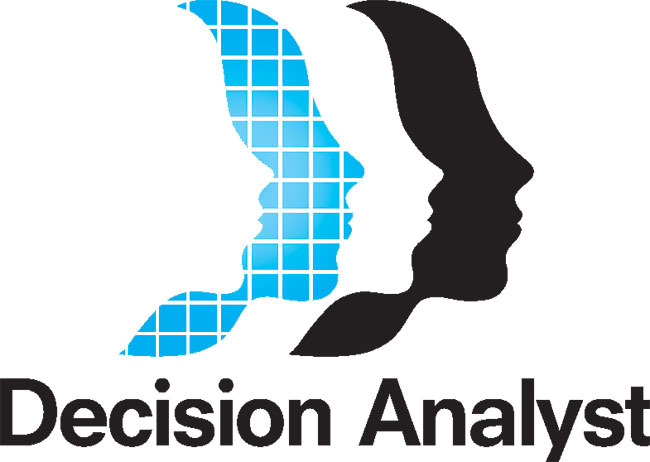
Decision Analyst Inc.
Founded 1978 | 150 employees, jerry w. thomas, ceo.

Phone 1-817-640-6166 www.decisionanalyst.com/services/strategy
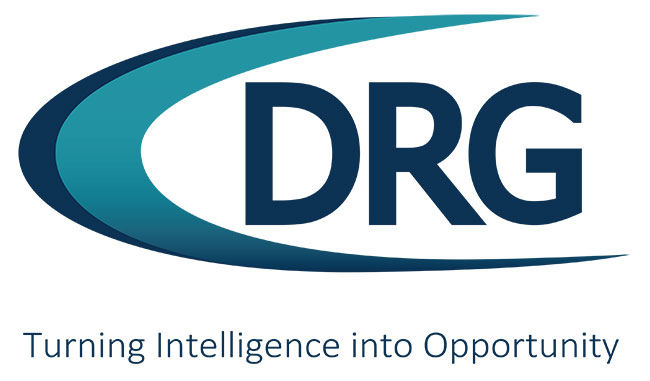
The Dieringer Research Group Inc. (The DRG)
Founded 1974 | 75 employees, lanie johnson, president and ceo.
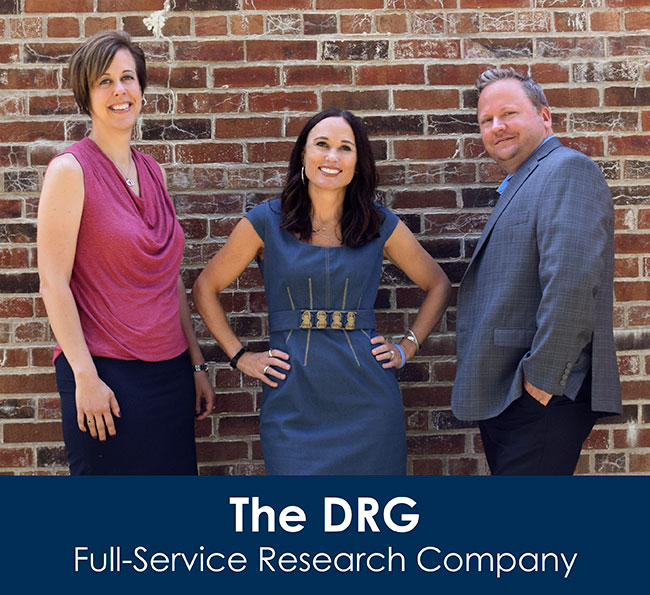
Phone 1-888-432-5220 www.thedrg.com

Global Survey
Founded 2008 | 25 employees, mayank bhanushali, founder and managing dir..

Phone 91-740322-0322 www.globalsurvey.gs

Founded 2006 | 50 employees
Jeffrey kelsch, managing partner.

Phone 1-208-809-7117 (U.S.) www.holdendata.com

Information Specialists Group Inc. (ISG)
Founded 1996 | 13 employees, robert mcgarry jr., president.

Phone 1-800-279-5314 or 1-952-279-5314 isgmn.com

InsightsNow
Founded in 2003 | 35+ employees, dr. david lundahl, ceo and founder.

Phone 1-541-757-1404 www.insightsnow.com
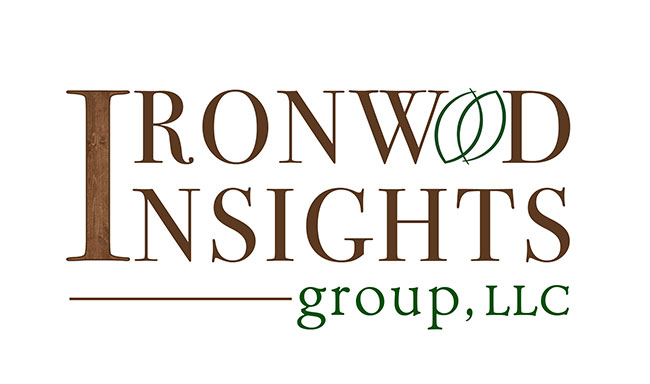
Ironwood Insights Group LLC
Founded 2017 | 320 employees, brad larson, founder and ceo.

[email protected] Phone 1-801-569-0107, x2110 www.ironwoodinsights.com
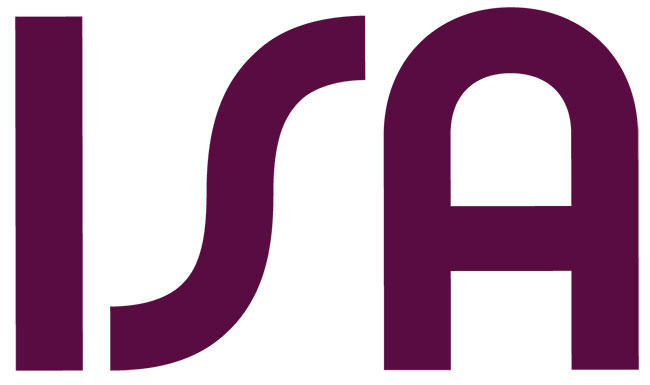
Founded 1982 | 219 employees
Jacqueline rosales, president.

[email protected] Phone 1-818-989-1044 www.isacorp.com
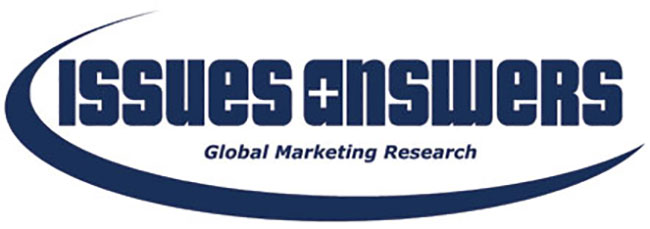
Issues and Answers Network Inc.
Founded 1988 | 400+ employees, mohit gour, evp.
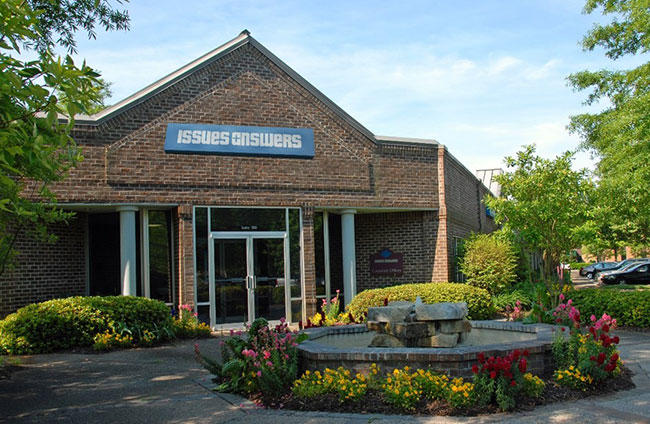
[email protected] Phone 1-757-456-1100 www.issans.com

Just The Facts Inc.
Founded 1994 , bruce tincknell, managing director.
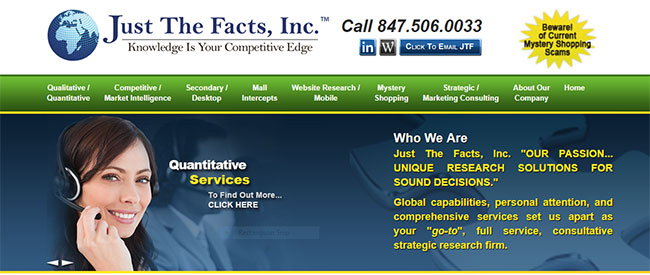
Phone 1-847-506-0033 www.justthefacts.com www.justthefacts.com/testimonials-x-30
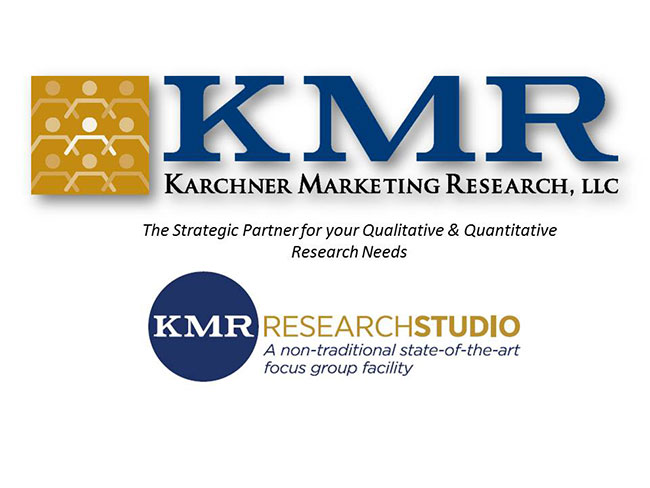
Karchner Marketing Research LLC
Founded 2003 , helen karchner, ceo and co-founder.

Phone 1-610-564-9624 www.KMRResearchStudio.com
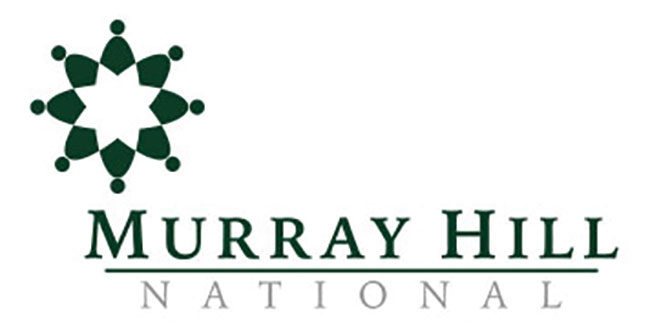
Murray Hill National
Founded 2013 | 30 employees, susan owens, coo.

Phone 1-972-707-7645 www.murrayhillnational.com
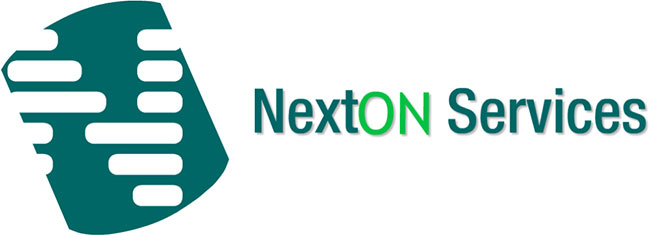
NextON Services
Founded 2013 | 20 employees, naim ul qadar, founder and ceo.

Phone 1-971-50-941-9689 (UAE); 1-818-453-1793 (U.S.) www.NextONServices.com

Founded 2010 | 45 employees
Frank nappo, ceo, frank hayden, coo.

Phone 1-603-766-5858 www.op4g.com
Founded 2017
Jim whaley, ceo.

Phone 1-212-653-8750 www.ovationmr.com

Radius Global Market Research
Founded 1960 | 150 employees, jamie myers, executive director.
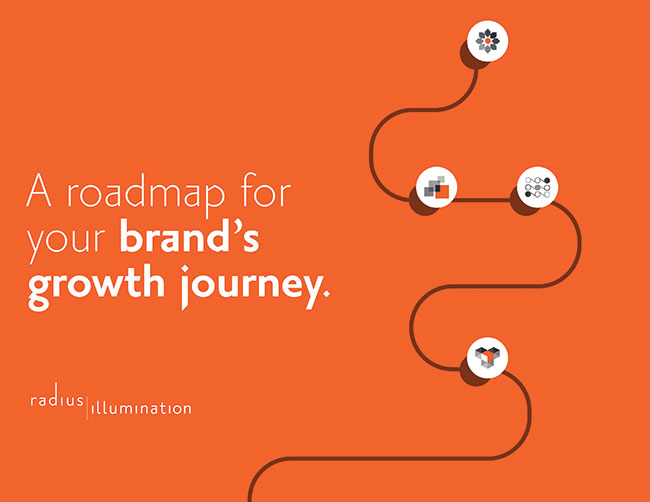
Phone 1-212-633-1100 radius-global.com

Research America Market Research Solutions
Founded 1985 | 300 employees, robert porter, ceo.

Phone 1-610-356-1800 www.ResearchAmericaInc.com

RTi Research
Founded 1979 | 40 employees, david rothstein, ceo.

Phone 1-203-653-4221 www.rtiresearch.com

Founded 2008 | 100+ employees
Andrew cooper, founder and ceo.

Phone 1-312-205-7417 www.addverve.com

Wakefield Research
Founded 2008 | 50 employees, paul bragan, managing partner, nathan richter, managing partner.
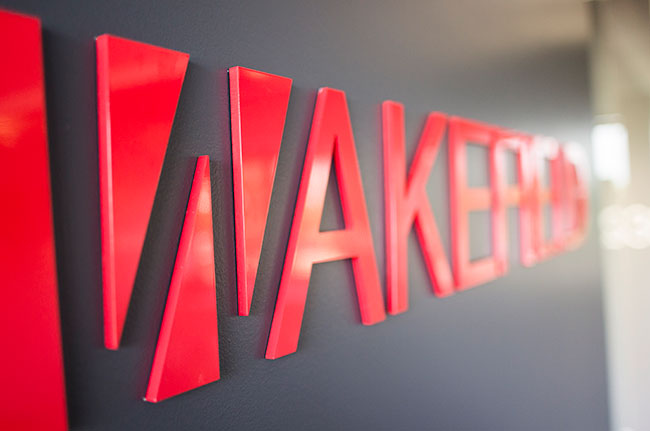
Phone 1-888-527-WAKE www.wakefieldresearch.com
Agile design: A holistic approach to navigating unknowns Related Categories: Business-To-Business, Research Industry, Consumer Research Business-To-Business, Research Industry, Consumer Research, Agile Research, Bus.-To-Bus. Research, Consumers, One-on-One (Depth) Interviews, Survey Design, Survey Research
Qualitatively Speaking: The power of B2B qualitative research and how to harness it Related Categories: Business-To-Business, Research Industry, CX/UX-Customer/User Experience Business-To-Business, Research Industry, CX/UX-Customer/User Experience, Bus.-To-Bus. Research, Qualitative Research, Recruiting-Qualitative
Survey Monitor March/April 2024 Related Categories: Research Industry, Health Care (Healthcare) Research Research Industry, Health Care (Healthcare) Research, Air Travelers, College Students, Education, Employees, Entrepreneurs/Small Business, Generation Baby Boomers, Health Care (Healthcare), High-Tech, Higher Education, Shopper Insights, Travel
In Case You Missed It...March/April 2024 Related Categories: Research Industry, Consumer Research Research Industry, Consumer Research, Beverage, Consumers, Package Development Research, Packaging Testing, Product Development Research
- SUGGESTED TOPICS
- The Magazine
- Newsletters
- Managing Yourself
- Managing Teams
- Work-life Balance
- The Big Idea
- Data & Visuals
- Reading Lists
- Case Selections
- HBR Learning
- Topic Feeds
- Account Settings
- Email Preferences
How Apple Is Organized for Innovation
- Joel M. Podolny
- Morten T. Hansen

When Steve Jobs returned to Apple, in 1997, it had a conventional structure for a company of its size and scope. It was divided into business units, each with its own P&L responsibilities. Believing that conventional management had stifled innovation, Jobs laid off the general managers of all the business units (in a single day), put the entire company under one P&L, and combined the disparate functional departments of the business units into one functional organization. Although such a structure is common for small entrepreneurial firms, Apple—remarkably—retains it today, even though the company is nearly 40 times as large in terms of revenue and far more complex than it was in 1997. In this article the authors discuss the innovation benefits and leadership challenges of Apple’s distinctive and ever-evolving organizational model in the belief that it may be useful for other companies competing in rapidly changing environments.
It’s about experts leading experts.
Idea in Brief
The challenge.
Major companies competing in many industries struggle to stay abreast of rapidly changing technologies.
One Major Cause
They are typically organized into business units, each with its own set of functions. Thus the key decision makers—the unit leaders—lack a deep understanding of all the domains that answer to them.
The Apple Model
The company is organized around functions, and expertise aligns with decision rights. Leaders are cross-functionally collaborative and deeply knowledgeable about details.
Apple is well-known for its innovations in hardware, software, and services. Thanks to them, it grew from some 8,000 employees and $7 billion in revenue in 1997, the year Steve Jobs returned, to 137,000 employees and $260 billion in revenue in 2019. Much less well-known are the organizational design and the associated leadership model that have played a crucial role in the company’s innovation success.
- Joel M. Podolny is the dean and vice president of Apple University in Cupertino, California. The former dean of the Yale School of Management, Podolny was a professor at Harvard Business School and the Stanford Graduate School of Business.
- MH Morten T. Hansen is a professor at the University of California, Berkeley, and a faculty member at Apple University, Apple. He is the author of Great at Work and Collaboration and coauthor of Great by Choice . He was named one of the top management thinkers in the world by the Thinkers50 in 2019. MortentHansen
Partner Center

U.S. Government Accountability Office
Small Business Research Programs: Increased Performance Standards Likely Affect Few Businesses Receiving Multiple Awards
Small businesses are important drivers of economic growth, but they can face challenges accessing capital to fund research and development.
To help, federal agencies award funding to small businesses. These awards are competitive, yet some businesses have received multiple awards. This has raised concerns about crowding out new businesses.
In 2022, Congress increased standards for small businesses that receive the highest numbers of awards—like requiring them to make sales related to the funded research. However, we found that most businesses meet the new standards, and few face meaningful consequences if they don't.

What GAO Found
Through the Small Business Innovation Research (SBIR) and Small Business Technology Transfer (STTR) programs, businesses compete for federal R&D awards. Phase I awards fund businesses to assess feasibility, and Phase II awards fund them to develop prototypes or make other advancements.
Twenty-two small businesses received 50 or more Phase II awards from federal agencies in the 10-year period from fiscal years (FY) 2011 through 2020. During this period, these 22 businesses, referred to as multiple awardees, represented fewer than 1 percent of all Phase II awardees (22 of 6,865). They received 11 percent of total Phase II awards and 10 percent of total Phase II award dollars.
The 11 participating agencies varied in the percentage of awards to multiple awardees. Agencies associated with multiple awardees have specific R&D needs and do not cap the number of awards per business. Other agencies have broader needs, prioritize attracting new applicants, or use award caps.
Phase II Awards Issued to Multiple Awardees in the Small Business Innovation Research and Small Business Technology Transfer Programs, Fiscal Years 2011–2020
Source: GAO analysis of data from the Small Business Administration. | GAO-24-106398
Note: For more details, see table 3, GAO-24-106398.
SBIR and STTR program goals include meeting federal R&D needs, increasing private sector commercialization, stimulating innovation, and encouraging participation by disadvantaged and women-owned small businesses. On average, multiple awardees performed below or similarly to other awardees in measures of progress toward these goals, according to GAO's analysis.
The SBIR and STTR Extension Act of 2022 created increased standards for some businesses, calling for greater success rates in transitioning from Phase I to Phase II and from Phase II to commercialization. But GAO's analysis suggests these standards may have minimal effects on participation by multiple awardees. In FY 2023, six companies did not meet the new standards. According to GAO's analysis, a small number of businesses are generally at risk of not meeting the standards. Among those, few may face meaningful consequences, because the limit on awards is higher than these businesses generally receive per year.
Why GAO Did This Study
Small businesses are important drivers of economic growth, but they can face challenges accessing capital to fund research and development. Through the SBIR and STTR programs, agencies provide awards (e.g., grants and contracts) to small businesses for several purposes, including to meet federal R&D needs, increase private sector commercialization, stimulate innovation, and encourage participation by disadvantaged and women-owned small businesses. New awards amounted to approximately $3 billion during FY 2021, according to data from the Small Business Administration (SBA), which oversees the programs.
The SBIR and STTR Extension Act of 2022 includes a provision for GAO to examine small businesses that received multiple awards. This report examines 1) the extent to which multiple awardees received 50 or more Phase II awards from participating agencies, 2) how multiple awardees compare on measures of progress toward program goals, and 3) the extent to which increased performance standards affect multiple awardees' participation.
For all three objectives, GAO compiled and analyzed data from multiple sources, including SBA. GAO also reviewed agency documentation and interviewed officials from the 11 participating agencies and SBA and a non-generalizable selection of 10 small businesses.
For more information, contact Candice N. Wright at (202) 512-6888 or [email protected] .
Full Report
Gao contacts.
Candice N. Wright Director [email protected] (202) 512-6888
Office of Public Affairs
Chuck Young Managing Director [email protected] (202) 512-4800

Today in Energy
- Recent articles
- liquid fuels
- natural gas
- electricity
- oil/petroleum
- production/supply
- consumption/demand
- exports/imports
- international
- forecasts/projections
- steo (short-term energy outlook)
What are the energy impacts from the Port of Baltimore closure?
The collapse of the Francis Scott Key Bridge into the Patapsco River on March 26 has temporarily halted all shipping traffic from the Port of Baltimore. In this article, we examine implications for energy-related trade.
The port is the second-largest exporting hub for coal in the United States, accounting for 28% of total coal exports in 2023, according to Census Bureau data. It is second only to Norfolk, Virgina, also known as Hampton Roads.
How much coal moves through the Port of Baltimore?
In three of the past five years, annual coal exports from the Port of Baltimore totaled around 20 million short tons, with the only exception occurring in 2020 when the reaction to the COVID-19 pandemic dampened coal demand worldwide.
Exports from Baltimore surged to 28 million short tons in 2023, mainly because of growing demand for U.S. coal in Asia. Even before the port’s closure, we were expecting much slower growth in total U.S. coal exports in 2024, of just 1%. The interruption in operations in Baltimore may affect the volume of exports this year.
There are two full-service terminals that receive, store, and load coal onto ocean-going vessels at the Port of Baltimore: the Curtis Bay Coal Piers served by the CSX Railroad and the CONSOL Energy Baltimore Marine terminal served by both the CSX and Norfolk Southern Railroads. An attractive feature of the Port of Baltimore is its proximity to the northern Appalachia coal fields in western Pennsylvania and northern West Virginia. Mines in this region produce both premium quality metallurgical coal and steam coal with a high heat content.
Steam coal, coal that is used mostly for electric power generation and industrial heating, is the dominant type of coal exported from the Port of Baltimore. Those shipments averaged around 12 million short tons from 2019 to 2022 before surging to 19 million short tons in 2023. Exports of metallurgical coal from Baltimore, or that used as a raw material in steel production, also are important, ranging from 6 million short tons to 10 million short tons from 2019 to 2023.
Other nearby ports, most notably Hampton Roads, have additional capacity to export coal, although factors including coal quality, pricing, and scheduling will affect how easily companies can switch to exporting from another port.
What are the export destinations for coal exports leaving Baltimore?
The top recipient of U.S. steam coal shipped from Baltimore by far over the past five years has been India, where the brick manufacturing industry has been a major customer. Other major recipients for steam coal from Baltimore include several European countries that are reached by ports in the Netherlands. Smaller markets include customers in the Dominican Republic, Canada, and Egypt.
Exports of metallurgical coal from the Port of Baltimore within the last five years went to several Asian countries. The top recipient in 2023 was Japan, which received 28% of the metallurgical coal shipped through the port of Baltimore. The next two major recipients of this coal over the last five years were China and South Korea. Multiple countries in Europe also receive metallurgical coal exported from the Port of Baltimore to the Netherlands, as do Brazil and Argentina.
What other energy products are affected by the port’s closure?
A limited amount of refined petroleum products are imported into the Port of Baltimore. Biodiesel, specifically biodiesel feedstock and other edible oils, are the largest refined petroleum product import with an average of 3,000 barrels per day (b/d) in 2023, mostly from Central America and Western Europe.
Other petroleum-derived products, such as fertilizers and other chemicals, are also imported. Baltimore imports the most asphalt of any U.S. port, about 4,000 b/d last year, with almost all imports originating from Canada . Asphalt is made from crude oil and is commonly used for roadways and roofing. Since the port is a major transit point for freight and bulk vessels, we expect bunker fuel consumption to decrease.
Baltimore imports the most urea ammonium nitrate on the U.S. Atlantic Coast, about 2,000 b/d in 2023, and the fourth most of all U.S. ports. Urea ammonium nitrate is a common liquid fertilizer , mostly imported from Russia . The Port of Baltimore is the closest coastal port to Midwestern markets, which are a major source of agricultural demand.
Other ports on the U.S. Atlantic Coast can also import asphalt, such as Providence, Rhode Island; New York, New York; and Wilmington, North Carolina. Other ports on the Atlantic Coast that can import urea ammonium nitrate are Norfolk, Virginia, and Wilmington, North Carolina.
Other, more widely used petroleum products are less affected. According to ship tracking data, there was one shipment of gasoline into the Port of Baltimore in 2023, and there were three petroleum-related export cargos in all of 2023.
Principal contributors: Jonathan Church, Mark Morey, Josh Eiermann
Tags: coal , exports/imports
Advertisement
Supported by
Use of Abortion Pills Has Risen Significantly Post Roe, Research Shows

By Pam Belluck
Pam Belluck has been reporting about reproductive health for over a decade.
- Share full article
On the eve of oral arguments in a Supreme Court case that could affect future access to abortion pills, new research shows the fast-growing use of medication abortion nationally and the many ways women have obtained access to the method since Roe v. Wade was overturned in June 2022.
The Details

A study, published on Monday in the medical journal JAMA , found that the number of abortions using pills obtained outside the formal health system soared in the six months after the national right to abortion was overturned. Another report, published last week by the Guttmacher Institute , a research organization that supports abortion rights, found that medication abortions now account for nearly two-thirds of all abortions provided by the country’s formal health system, which includes clinics and telemedicine abortion services.
The JAMA study evaluated data from overseas telemedicine organizations, online vendors and networks of community volunteers that generally obtain pills from outside the United States. Before Roe was overturned, these avenues provided abortion pills to about 1,400 women per month, but in the six months afterward, the average jumped to 5,900 per month, the study reported.
Overall, the study found that while abortions in the formal health care system declined by about 32,000 from July through December 2022, much of that decline was offset by about 26,000 medication abortions from pills provided by sources outside the formal health system.
“We see what we see elsewhere in the world in the U.S. — that when anti-abortion laws go into effect, oftentimes outside of the formal health care setting is where people look, and the locus of care gets shifted,” said Dr. Abigail Aiken, who is an associate professor at the University of Texas at Austin and the lead author of the JAMA study.
The co-authors were a statistics professor at the university; the founder of Aid Access, a Europe-based organization that helped pioneer telemedicine abortion in the United States; and a leader of Plan C, an organization that provides consumers with information about medication abortion. Before publication, the study went through the rigorous peer review process required by a major medical journal.
The telemedicine organizations in the study evaluated prospective patients using written medical questionnaires, issued prescriptions from doctors who were typically in Europe and had pills shipped from pharmacies in India, generally charging about $100. Community networks typically asked for some information about the pregnancy and either delivered or mailed pills with detailed instructions, often for free.
Online vendors, which supplied a small percentage of the pills in the study and charged between $39 and $470, generally did not ask for women’s medical history and shipped the pills with the least detailed instructions. Vendors in the study were vetted by Plan C and found to be providing genuine abortion pills, Dr. Aiken said.
The Guttmacher report, focusing on the formal health care system, included data from clinics and telemedicine abortion services within the United States that provided abortion to patients who lived in or traveled to states with legal abortion between January and December 2023.
It found that pills accounted for 63 percent of those abortions, up from 53 percent in 2020. The total number of abortions in the report was over a million for the first time in more than a decade.
Why This Matters
Overall, the new reports suggest how rapidly the provision of abortion has adjusted amid post-Roe abortion bans in 14 states and tight restrictions in others.
The numbers may be an undercount and do not reflect the most recent shift: shield laws in six states allowing abortion providers to prescribe and mail pills to tens of thousands of women in states with bans without requiring them to travel. Since last summer, for example, Aid Access has stopped shipping medication from overseas and operating outside the formal health system; it is instead mailing pills to states with bans from within the United States with the protection of shield laws.
What’s Next
In the case that will be argued before the Supreme Court on Tuesday, the plaintiffs, who oppose abortion, are suing the Food and Drug Administration, seeking to block or drastically limit the availability of mifepristone, the first pill in the two-drug medication abortion regimen.
The JAMA study suggests that such a ruling could prompt more women to use avenues outside the formal American health care system, such as pills from other countries.
“There’s so many unknowns about what will happen with the decision,” Dr. Aiken said.
She added: “It’s possible that a decision by the Supreme Court in favor of the plaintiffs could have a knock-on effect where more people are looking to access outside the formal health care setting, either because they’re worried that access is going away or they’re having more trouble accessing the medications.”
Pam Belluck is a health and science reporter, covering a range of subjects, including reproductive health, long Covid, brain science, neurological disorders, mental health and genetics. More about Pam Belluck
We've detected unusual activity from your computer network
To continue, please click the box below to let us know you're not a robot.
Why did this happen?
Please make sure your browser supports JavaScript and cookies and that you are not blocking them from loading. For more information you can review our Terms of Service and Cookie Policy .
For inquiries related to this message please contact our support team and provide the reference ID below.
FTX founder Sam Bankman-Fried sentenced to 25 years in prison
- Sam Bankman-Fried has been sentenced to 25 years in prison.
- A jury convicted him of seven criminal counts, finding him guilty of fraud and money laundering.
- Bankman-Fried expressed regret at the hearing — but still tried to shift blame.

Sam Bankman-Fried, the disgraced cryptocurrency mogul, has finally learned his fate.
US District Judge Lewis Kaplan sentenced Bankman-Fried Thursday to 25 years in prison.
The judge also ordered over $11 billion in forfeiture, which includes the properties and assets Bankman-Fried purchased through customer funds. The payments to victims, Kaplan said, should be handled through the Justice Department.
In his sentencing, Kaplan described Bankman-Fried as ambitious and deceitful, willing to gamble with his customers' livelihoods.
"He knew it was wrong. He knew it was criminal," Kaplan said as Bankman-Fried slumped in his chair. "He regrets making a very bad bet about the likelihood of getting caught."
Bankman-Fried, his eyes red, addressed the court ahead of his sentencing Thursday. He expressed regret for letting down customers and employees of FTX, his cryptocurrency exchange.
"My useful life is probably over," he said. "It has been over for a while."
At the same time, he insisted it should not have gone bankrupt — claiming that the month the exchange collapsed would be "difficult" no matter what, but that everyone could have been repaid "with interest"
Bankman-Fried's newly hired legal team , which said it would appeal his conviction, had asked for a sentence of 6.5 years .
Thursday's sentencing in Manhattan federal court followed a verdict where jurors found the 32-year-old guilty on seven counts of wire fraud, money laundering, and conspiracy charges in November after a six-week criminal trial.
Bankman-Fried faced a maximum of 110 years in prison following the collapse of FTX , his cryptocurrency exchange, where he was the CEO and cofounder. Prosecutors had asked for a sentence of between 40 and 50 years behind bars, comparing him to the Ponzi fraudster Bernie Madoff.
Federal prosecutors argued that Bankman-Fried and his inner circle of executives funneled customer funds to themselves by commingling money with Alameda Research, Bankman-Fried's hedge fund, amounting to an $11 billion fraud scheme. They used those funds for advertising, tech investments, luxurious real estate in the Bahamas , and political donations to gain influence in Washington, DC. At the same time, Bankman-Fried and other executives lied to investors and lenders of FTX and Alameda Research about the truth of the company's finances.
The sentencing took place in the same 26th-floor courtroom as the trial in a lower Manhattan courthouse. The sky, a stark white, threatened to rain. Clouds wrapped themselves around nearby skyscrapers. Bankman-Fried, clad in a standard-issue taupe tunic over a gray T-shirt, and with substantial hair volume , walked into the room in the custody of US Marshals with his hands behind his back and chains clanking between his ankles.
When his attorney, Marc Mukasey, described his devotion to others and struggles with depression manifested by an "aching hole in his brain where happiness should be," Bankman-Fried blinked rapidly, appearing to fight back tears and later wiping his face.
Mukasey said Bankman-Fried could not be understood "through the lens of human behavior," referring to his autism diagnosis.
"Sam Bankman-Fried doesn't make decisions with his heart," Mukasey said. "He makes decisions with math in his brain."
Before announcing Bankman-Fried's sentence, Kaplan said he believed he perjured himself when he testified, lying about when he became aware of Alameda's liability to FTX customers.
The judge said that he wanted to prevent Bankman-Fried from committing more harm.
Related stories
"There is a risk that this man will be in a position to do something very bad in the future, and it's not a trivial risk, not a trivial risk at all," he said.
Shortly after FTX collapsed in November of 2022, other executives of his companies — including Caroline Ellison , Gary Wang , and Nishad Singh — quickly began cooperating with federal prosecutors in Manhattan, sealing Bankman-Fried's fate . They all pleaded guilty to fraud charges and testified against him at trial, each explaining the inner workings of their scheme.
Now that Bankman-Fried's sentencing is over, Kaplan, the judge, will likely swiftly order sentencing hearings for Ellison, Wang, and Singh. Prosecutors, as part of their cooperation agreement, have promised to ask the judge for light sentences.
Ryan Salame , another FTX executive, who pleaded guilty to charges against him but did not cooperate with prosecutors, has a sentencing scheduled for May 1.
During his trial, Bankman-Fried made the rare decision to take the witness stand , though it didn't appear to work in his favor.
Kaplan lost his patience with Bankman-Fried a few times, giving him terse instructions to answer questions directly . One attorney who advised his criminal defense team later said he "may be at the very top of the list as the worst person I've ever seen do a cross examination."
At Thursday's sentencing hearing, Kaplan called the testimony "hair-splitting" and "evasive" when it wasn't outright perjurous.
"I've been doing this job for 30 years. I have never seen a performance like that," Kaplan said.
Ahead of the sentencing hearing, Bankman-Fried's attorneys argued that FTX's customers didn't actually lose money, pointing to a moment in a January hearing for FTX's bankruptcy, where a lawyer said FTX customers and creditors "will eventually be paid in full."
Prosecutors — and John J. Ray III, who took over as CEO of FTX to shepherd the company through the bankruptcy process — disputed that accounting , saying the quote was taken out of context.
"The value we hope to return to creditors would not exist without the tens of thousands of hours that dedicated professionals have spent digging through the rubble of Mr. Bankman-Fried's sprawling criminal enterprise to unearth every possible dollar, token or other asset that was spent on luxury homes, private jets, overpriced speculative ventures, and otherwise lost to the four winds," Ray wrote in a court filing ahead of the sentencing.
Federal prosecutors had also initially accused Bankman-Fried of campaign finance crimes, but later withdrew the charges. Judges in the Bahamas, where Bankman-Fried was extradited from to the US, ruled that the charges were not included in the extradition treaty between the two countries.
Prosecutors asked Kaplan to consider it in his sentencing anyway, writing that there was clear evidence Bankman-Fried went on a massive political bribing spree.
"His unlawful political donations to over 300 politicians and political action groups, amounting to in excess of $100 million, is believed to be the largest-ever campaign finance offense," prosecutors wrote in their sentencing submission. "His bribe of Chinese government officials—totaling $150 million—was one of the single largest by an individual."
Kaplan did so, noting that Bankman-Fried was seeking "power and influence."
Bankman-Fried said involvement in the American political sphere was to promote responsible cryptocurrency regulation, but Kaplan noted that he criticized regulators in private messages presented at the trial.
"In my judgment, that was an act," Kaplan said. "And he admitted it."
Bankman-Fried has been incarcerated in Brooklyn's Metropolitan Detention Center since being remanded there prior to his trial.
His parents, Joseph Bankman and Barbara Fried , submitted letters pleading for a lighter sentence, arguing that Bankman-Fried is neurodivergent and his "inability to read or respond appropriately to many social cues" could put him in danger.
"We are heartbroken and will continue to fight for our son," Bankman and Fried said in a statement to Business Insider after the hearing.
Kaplan said he would recommend that the Federal Bureau of Prisons send Bankman-Fried to a facility close to the San Francisco area so his family can visit him.
Watch: Why Sam Bankman-Fried is charged with perpetuating one of the biggest frauds in US history
- Main content

IMAGES
VIDEO
COMMENTS
In today's fiercely competitive markets, doing good company research is a game-changer. In fact, a 2022 report on competitive intelligence found that 98% of businesses believe researching their competitors is vital for success.. If you have the right tools to collect accurate competitive intelligence, you'll be able to anticipate your competitors' moves and emerging threats to stay ahead ...
How to research a company. It's important to note that this research does take time, so set aside the time necessary to research properly. If you can't set aside several hours, break it into dedicated 20-minute blocks. Spend each block researching a different part of the company. Here's an example of what your research calendar might look ...
The EDGAR database provides free public access to corporate information, allowing you to research a public company's financial information and operations by reviewing the filings the company makes with the SEC. You can also research information provided by mutual funds (including money market funds), exchange-traded funds (ETFs), and variable ...
Researching a company for investment involves leveraging various types of data. Firstly, there is, of course, firmographic information like the company's location, industry, revenue, and size. This is where the company research kicks off. Then another crucial piece is Information about the key employees of the company, and it ranges from ...
6. Tap anonymous company reviews and feedback. InHerSight data found 49 percent of women say they're able to be completely honest in an employer review if the employer is the one collecting it, while 81 percent say they can be completely honest if a third-party is collecting that review. This is why utilizing anonymous, third-party data ...
Business research helps companies make better business decisions by gathering information. The scope of the term business research is quite broad - it acts as an umbrella that covers every aspect of business, from finances to advertising creative. It can include research methods which help a company better understand its target market.
For example, those doing research on retail companies may be looking for company locations, number of stores, square feet managed, etc. while those doing research on pharmaceuticals may be interested in R&D/intellectual property figures. Some of this can be found in SEC filings though full-text databases can also be helpful.
Here, reference specialists in specific subject areas of business assist patrons in formulating search strategies and gaining access to the information and materials contained in the Library's rich collections of business and economics materials. Submit a question through our Ask a Librarian service, call us at 202-707-5639, or visit us in ...
Although researching a company is pretty straightforward, it is still important to break down the process into three key steps. Schedule time to do research. Give yourself the time to do adequate research. 15 minutes to an hour should be plenty of time. This depends on your level of interest with the company, but be reasonable.
Top ↑ How to Research a Company - Top 9 Tips Tip#1. Start With the Employer's Website Tip #2. Find Company Employees via LinkedIn Tip #3. Look Up News About the Employer Tip #4. Look Up Company Reviews on Glassdoor Tip #5. Tap Into Your Network Tip #6. Research Company's Social Media Pages Tip #7.
Company status may change over time due to sale, mergers, acquisitions, or going out of business. The easiest way to determine whether a U.S. company is public is to google a company name ticker, since a public company has to have a ticker symbol, and then confirm the current status using SEC's EDGAR tool. A public company has a recent 10K or 10Q.
When researching an employer, read the company website and press releases for information about the company's history and progress. Photo by Jonathan Hordle / Rex Features The Careers Blog ...
Business research is the process of gathering relevant information regarding a company's business activities and using it to maximize profit. Regardless of your experience and knowledge, learning about business research can help you improve your organization's output. Researching the subject can also have a positive effect on your career ...
Nikki Vivian. Researching a company before an interview is a crucial part of the interview process and can be the difference between and remaining a jobseeker. A job isn't just about the role itself. The company you work for has an important part to play in whether you feel happy in your job and how you are expected to work.
Business research is defined as 'the systematic and objective process of collecting, recording, analyzing and interpreting data for aid in solving managerial problems'. These managerial problems can be linked to any business function, e.g. human resources, finance, marketing or research and development.
Use Google to find the employer's website and check the company's social media profiles. Then review the sites to see what the company is saying about itself. Many times, you'll find articles or links about new products or technologies where the company is mentioned. That's a good place to explore for more in-depth research.
Knowing the total value of what you'll be offered if you decide to accept a job is a key aspect of your decision-making, so research stuff like vacation and paid time off, retirement accounts ...
SalesIntel. SalesIntel is another company research tool that allows you to retrieve the data users may need from other companies. Besides its database, SalesIntel also offers users 95% accurate data, a large number of direct dial numbers, and data verified within the previous 90 days. Its research on demand allows users to request specific ...
Tuck away positive news and examples you encounter during your research to use in the interview. 4. Go Undercover to Learn Company Culture. You may be able to glean a bit about corporate culture through a company's blog and social media accounts, but to really build on that information, try looking for information from external sources.
3. Review the Company's Social Media Accounts. Next, research the company's Facebook, LinkedIn, Twitter, and other social profiles to see recent news you might have missed on Google News in step 2. You might see pictures of employee outings too, etc.
A full ranking of the top market research and data analytics companies in the U.S. for 2020. The "2020 Top 50 U.S. Report"—formerly known as "The Gold Report"—is developed by Diane Bowers and produced in partnership with the Insights Association and Michigan State University.The report is also sponsored by the AMA, ESOMAR and the Global Research Business Network.
New research on business or company management from Harvard Business School faculty on issues including the relationship between corporate purpose and financial performance, the downsides of self-interest on businesses, government, and the economy, and advice for new CEOs.
Our extensive research skills encompass voice of the customer, satisfaction, decision-making, evaluating products and services, competitors and more. Let's discuss your specific needs, ensuring your initiatives are effectively executed. Call for free consultation. Phone 1-847-506-0033. www.justthefacts.com.
Apple is well-known for its innovations in hardware, software, and services. Thanks to them, it grew from some 8,000 employees and $7 billion in revenue in 1997, the year Steve Jobs returned, to ...
Through the Small Business Innovation Research (SBIR) and Small Business Technology Transfer (STTR) programs, businesses compete for federal R&D awards. Phase I awards fund businesses to assess feasibility, and Phase II awards fund them to develop prototypes or make other advancements.
There are two full-service terminals that receive, store, and load coal onto ocean-going vessels at the Port of Baltimore: the Curtis Bay Coal Piers served by the CSX Railroad and the CONSOL Energy Baltimore Marine terminal served by both the CSX and Norfolk Southern Railroads.
The News. On the eve of oral arguments in a Supreme Court case that could affect future access to abortion pills, new research shows the fast-growing use of medication abortion nationally and the ...
The Swiss National Bank needs to spend roughly 27 billion francs ($30 billion) to keep its currency from appreciating 1.1%, according to a staff paper that offers a rare vignette into what ...
Federal prosecutors argued that Bankman-Fried and his inner circle of executives funneled customer funds to themselves by commingling money with Alameda Research, Bankman-Fried's hedge fund ...
The Seduction of Dracula: Directed by Nicholas Malden. With Miles Jonn-Dalton, Antonio Mayans, Ellen Wing, John Levene. A group of university students go on a research trip to the ruins of Castle Dracula. They awaken Count Dracula himself, and they must escape him before they become his eternal victims.